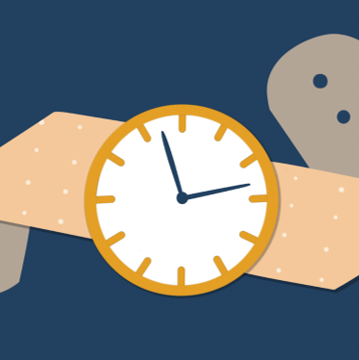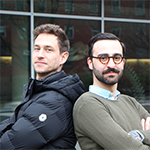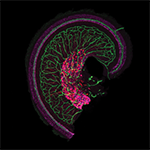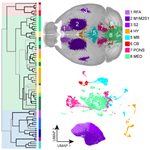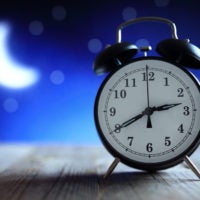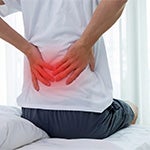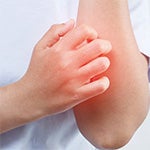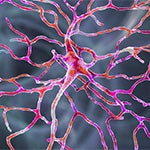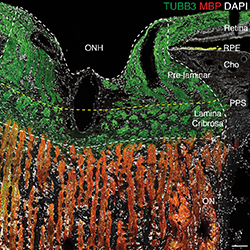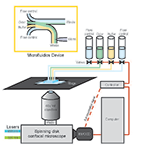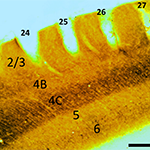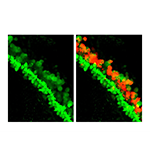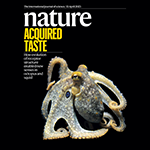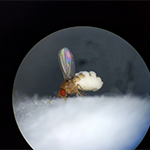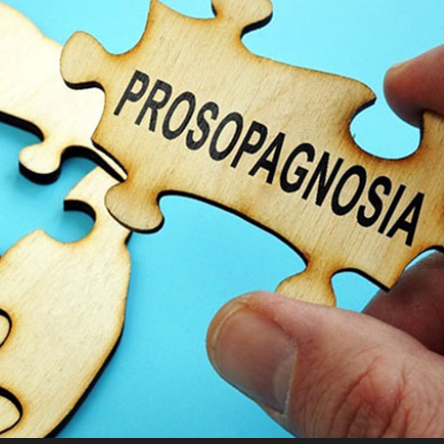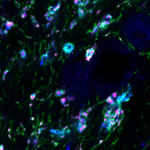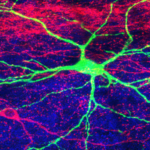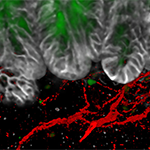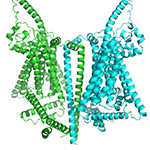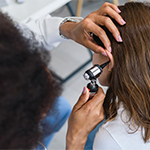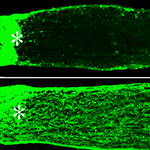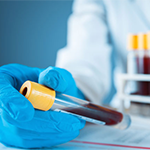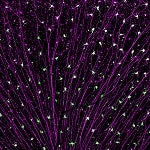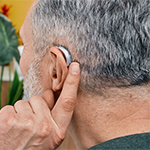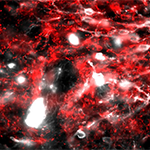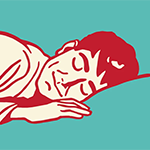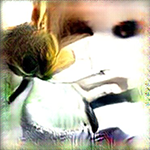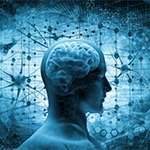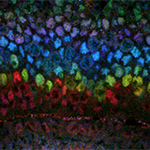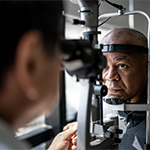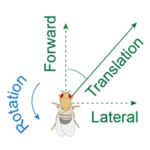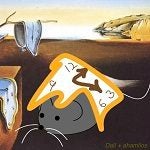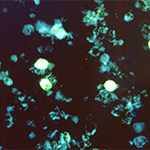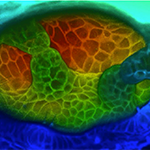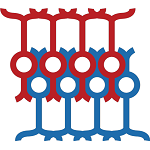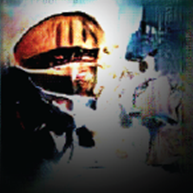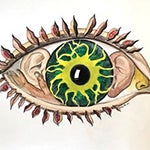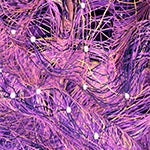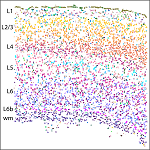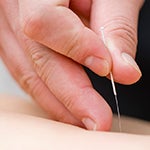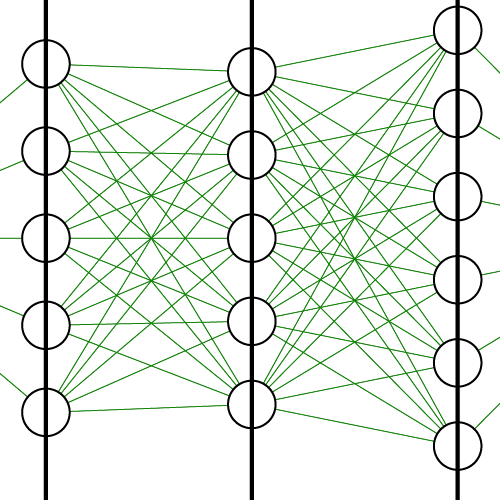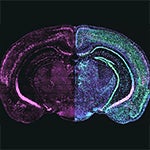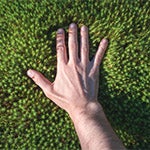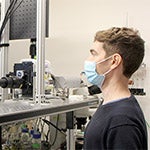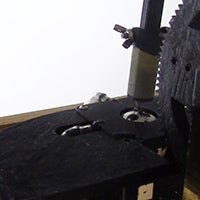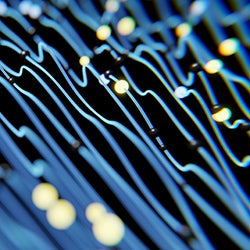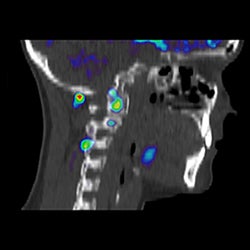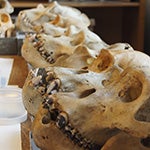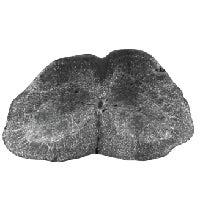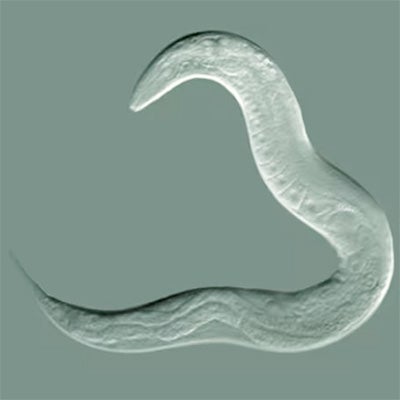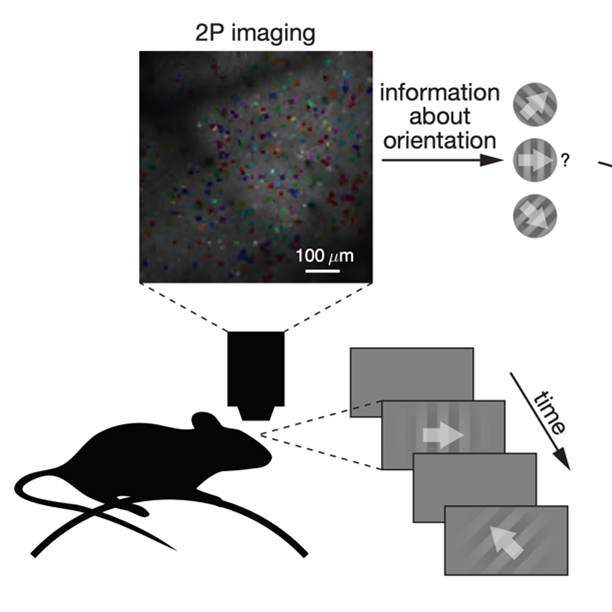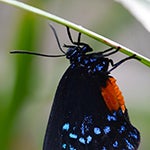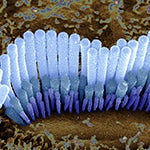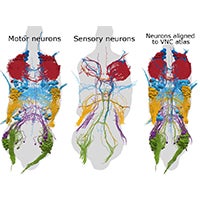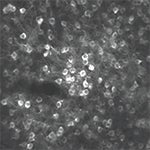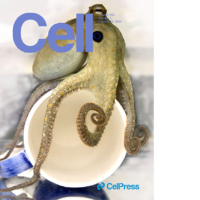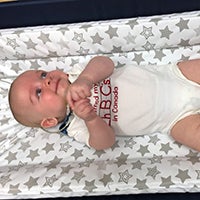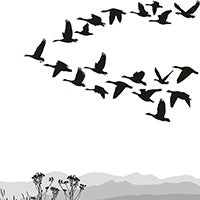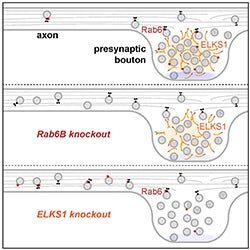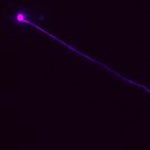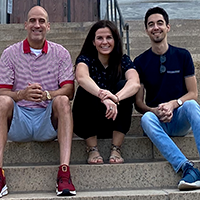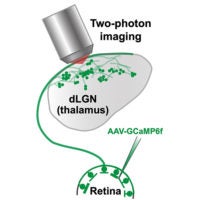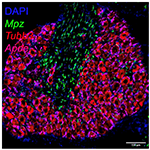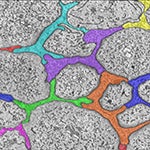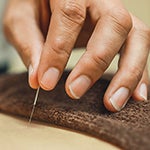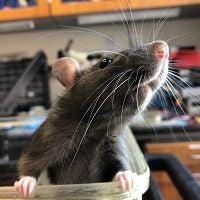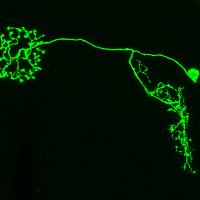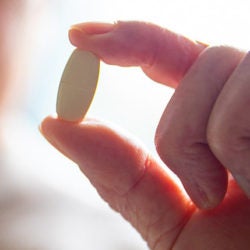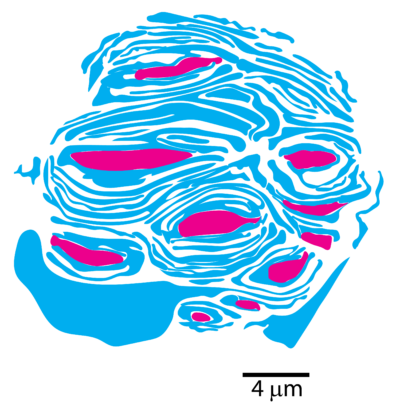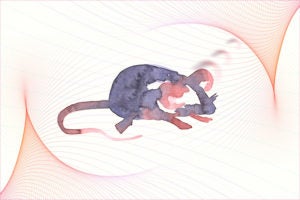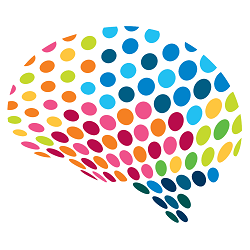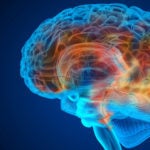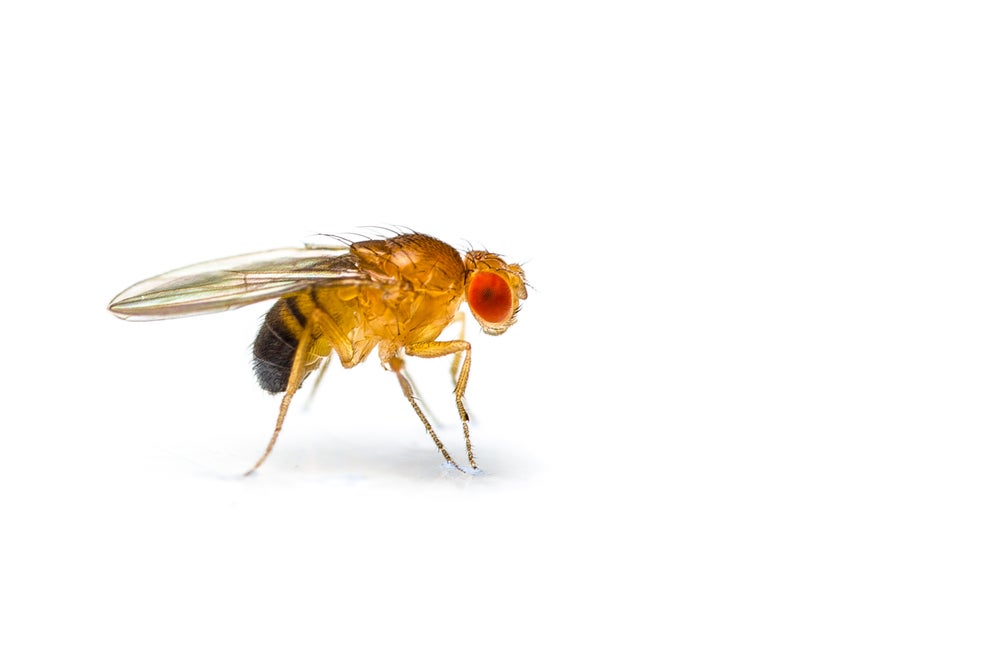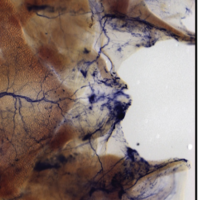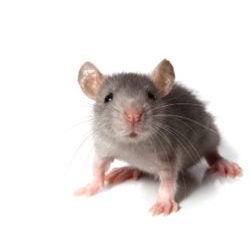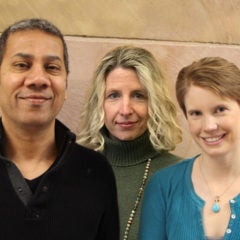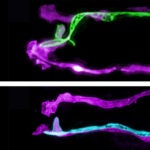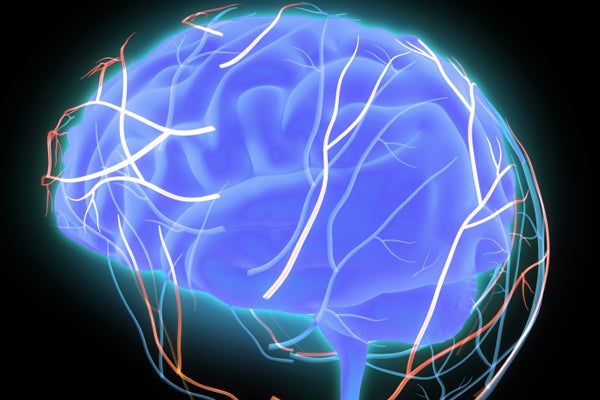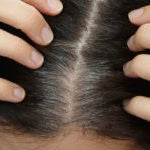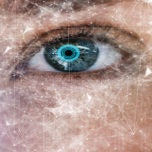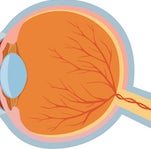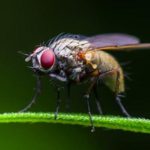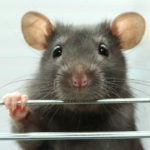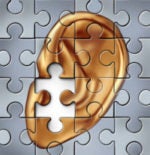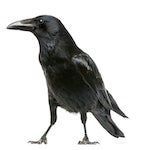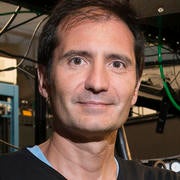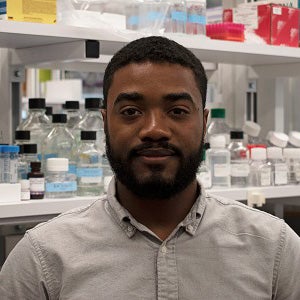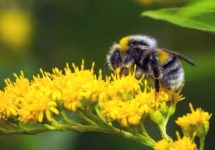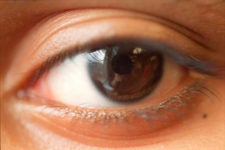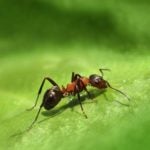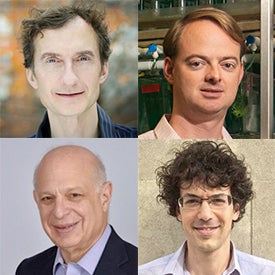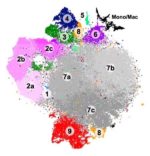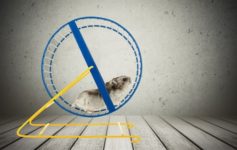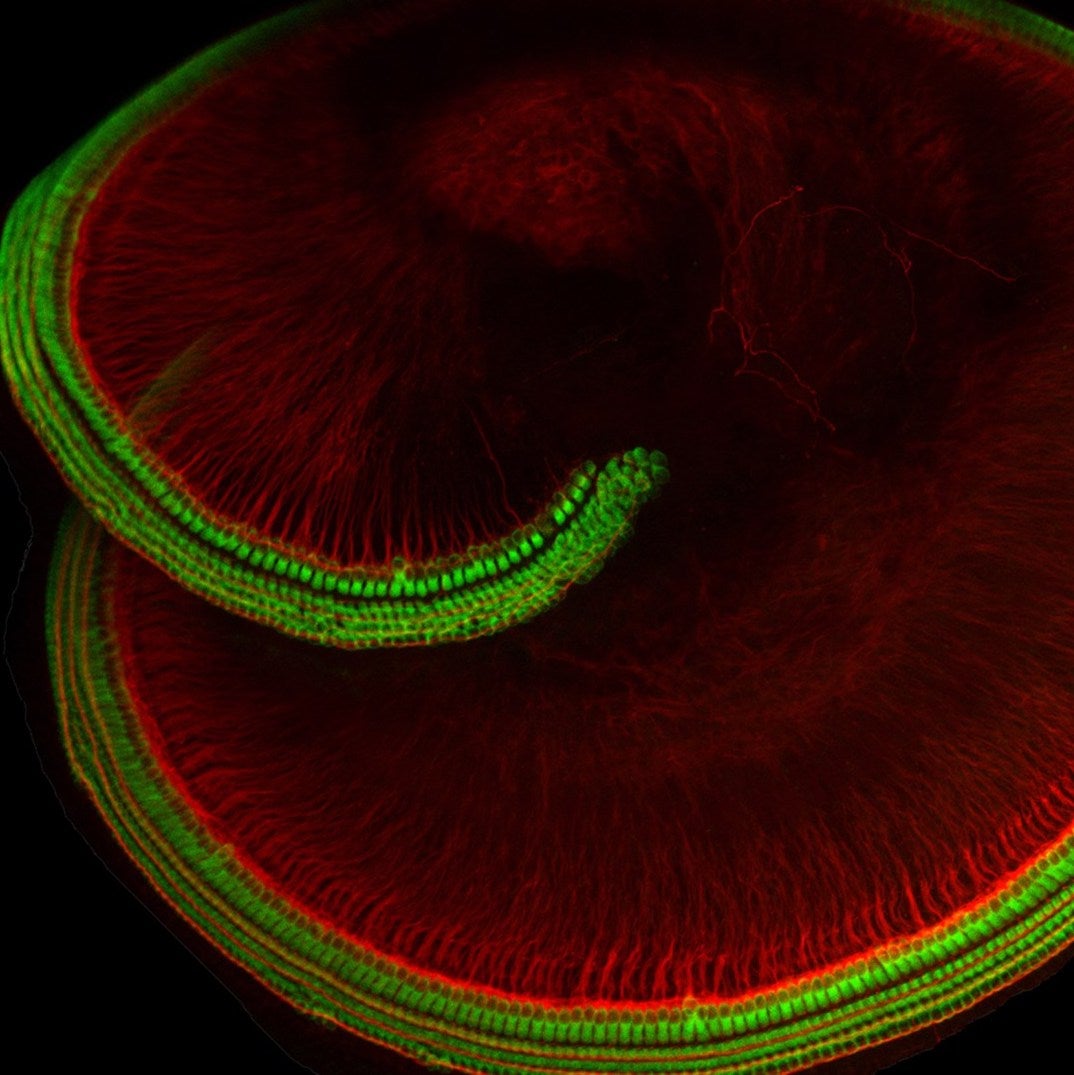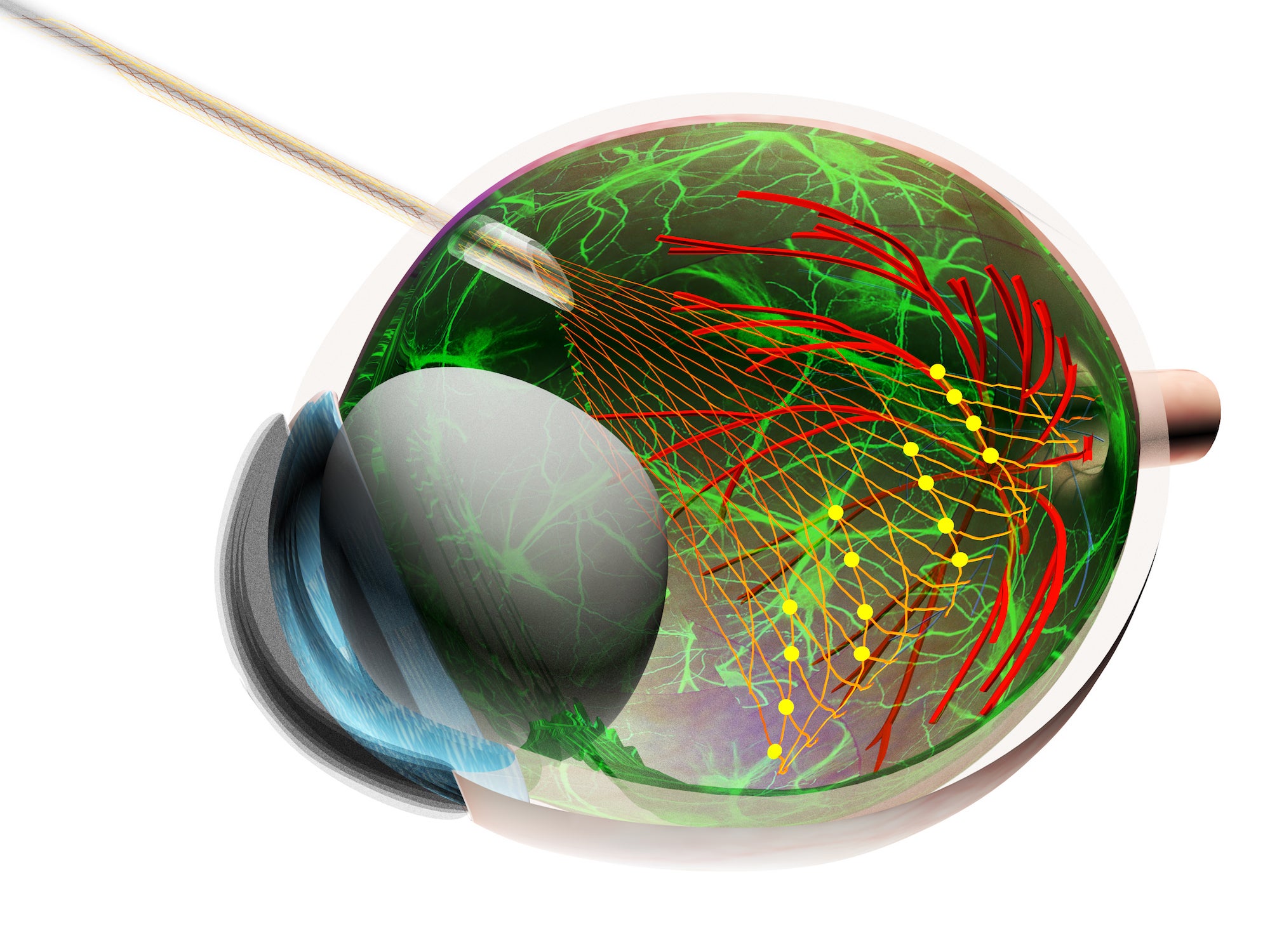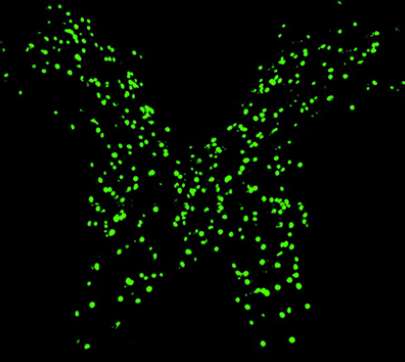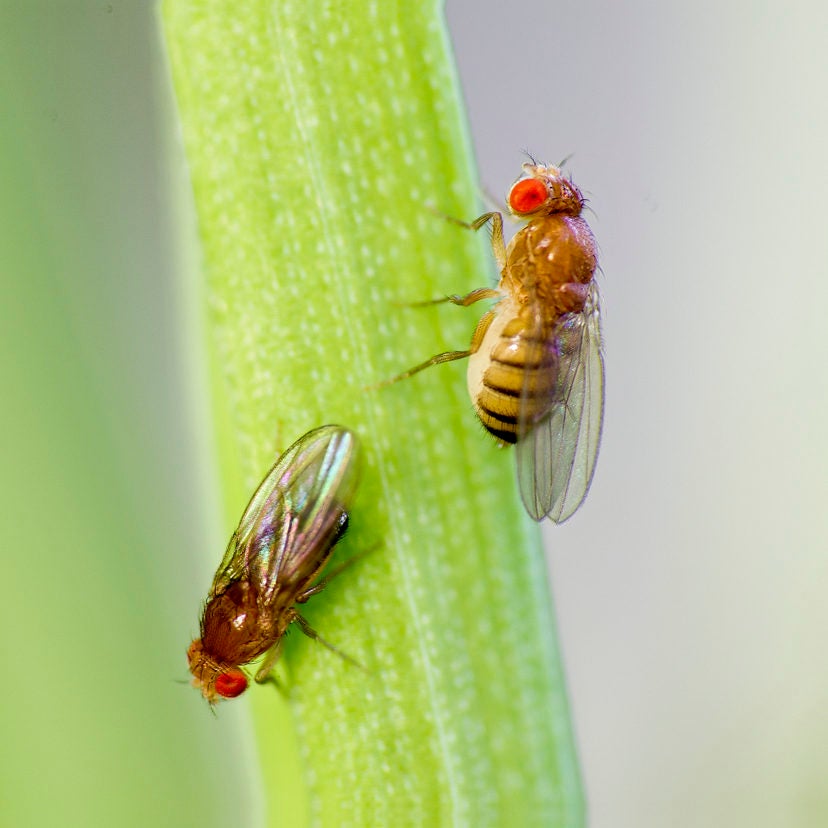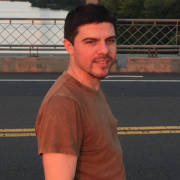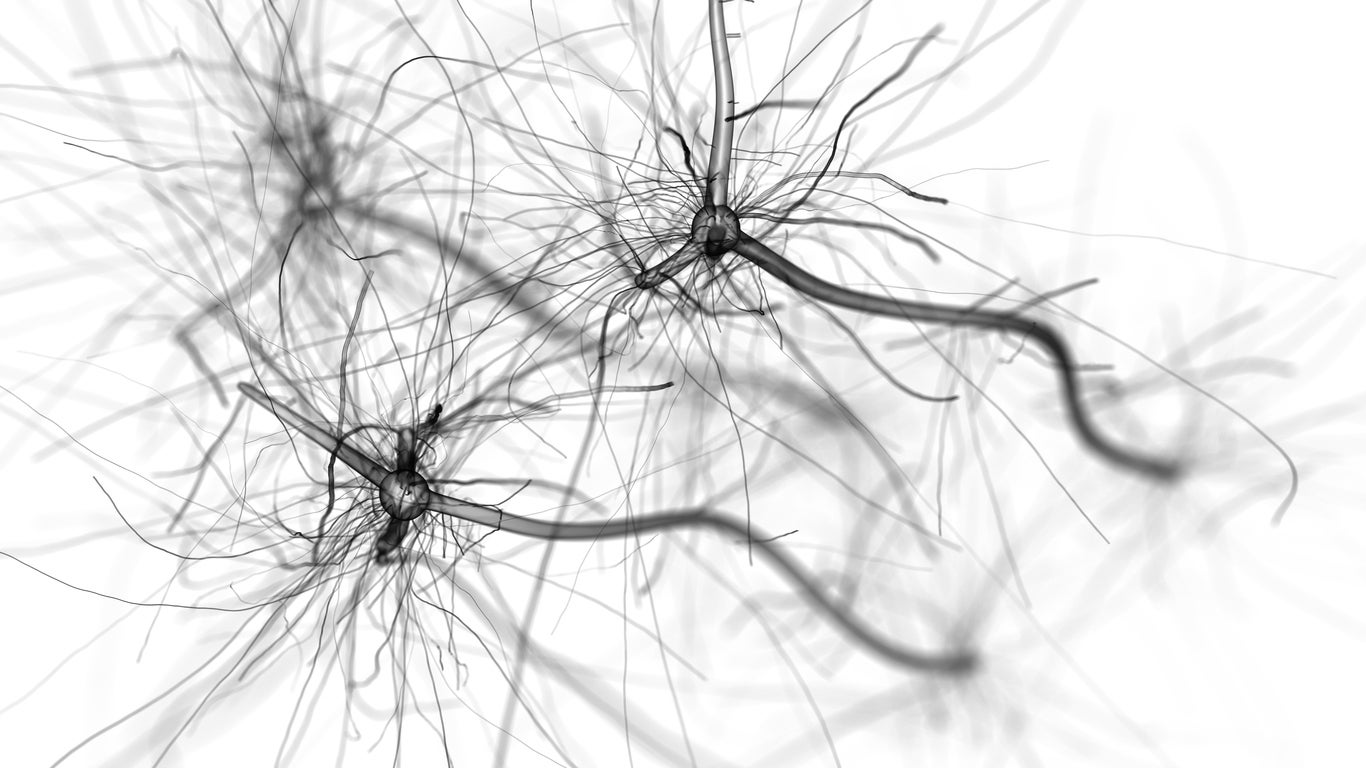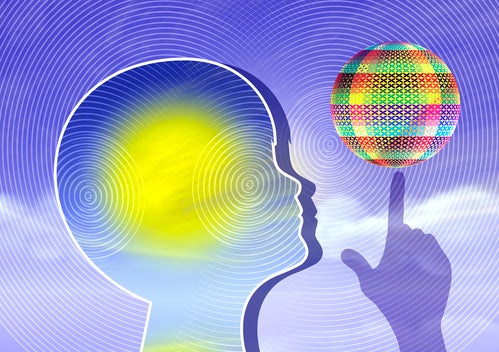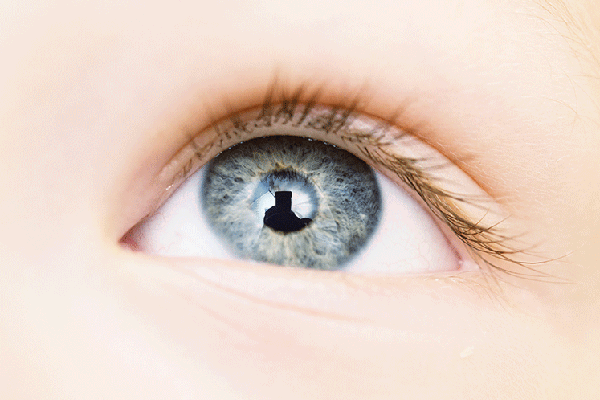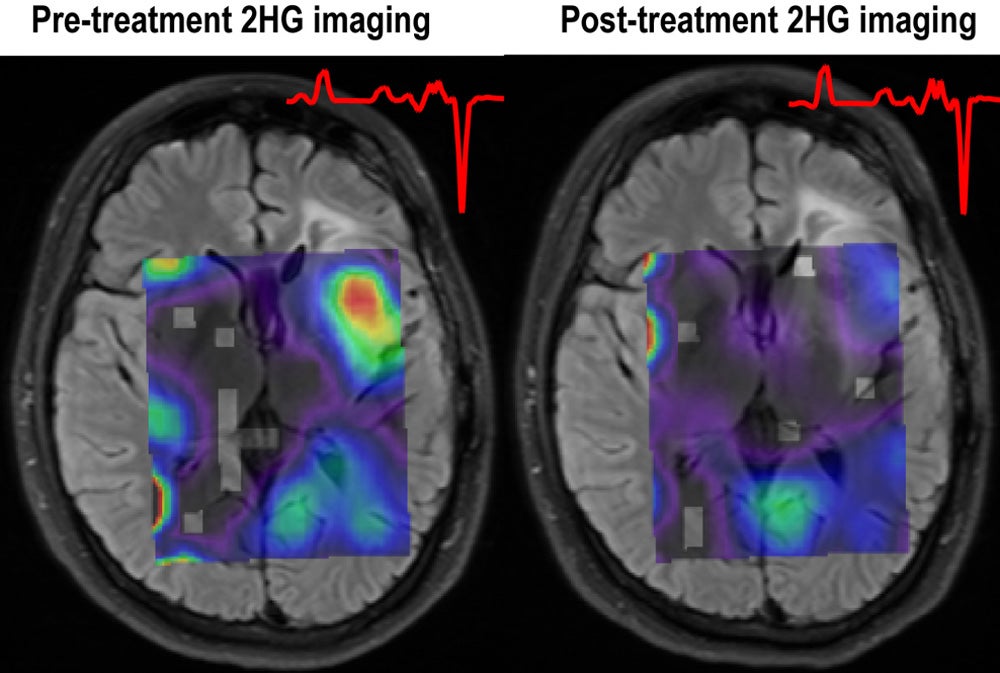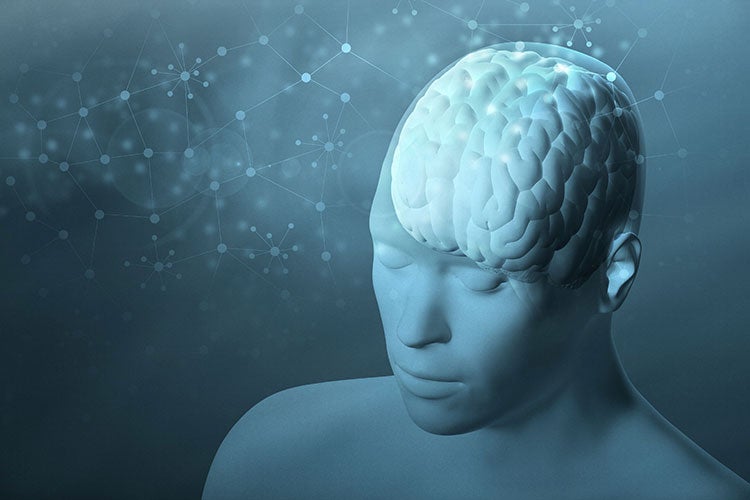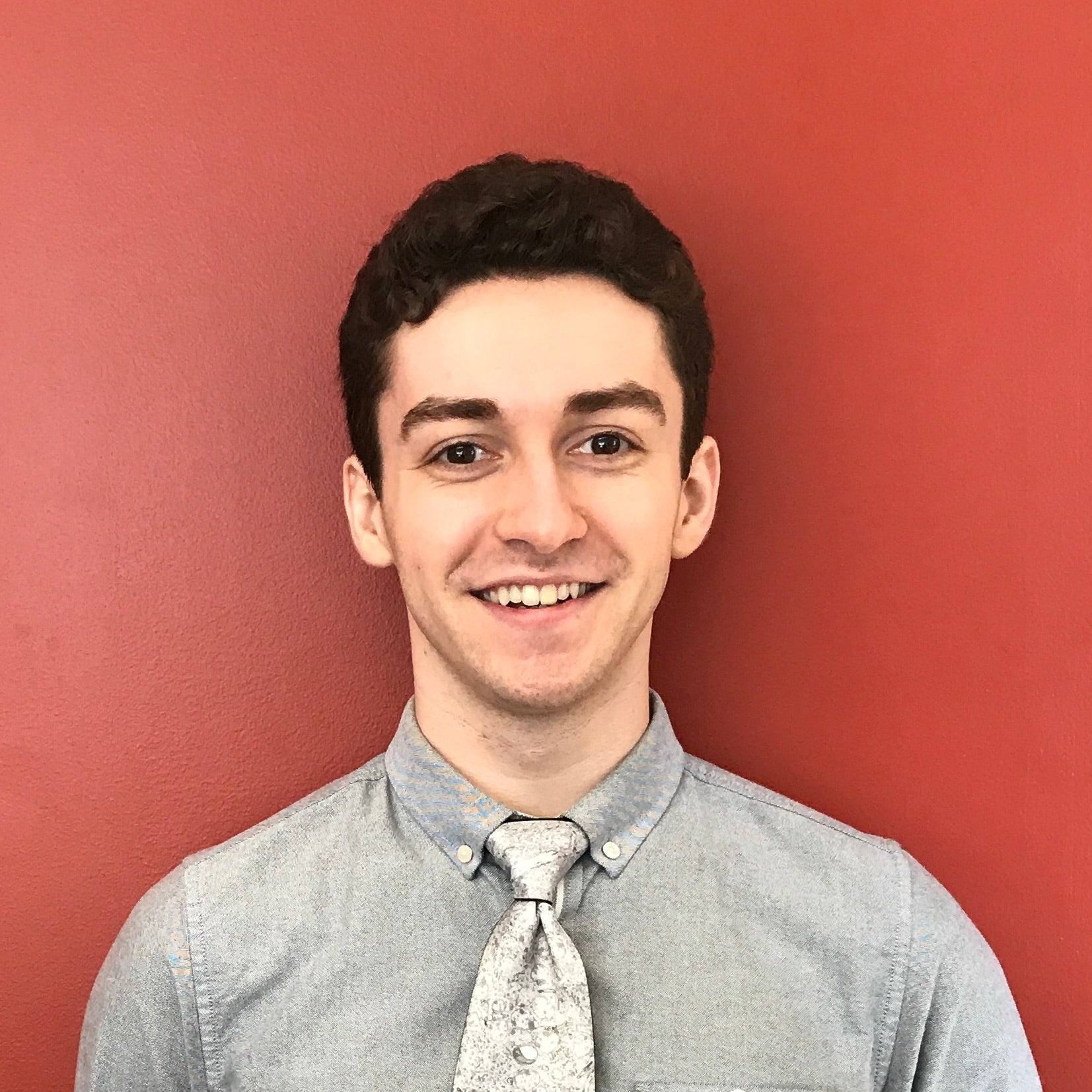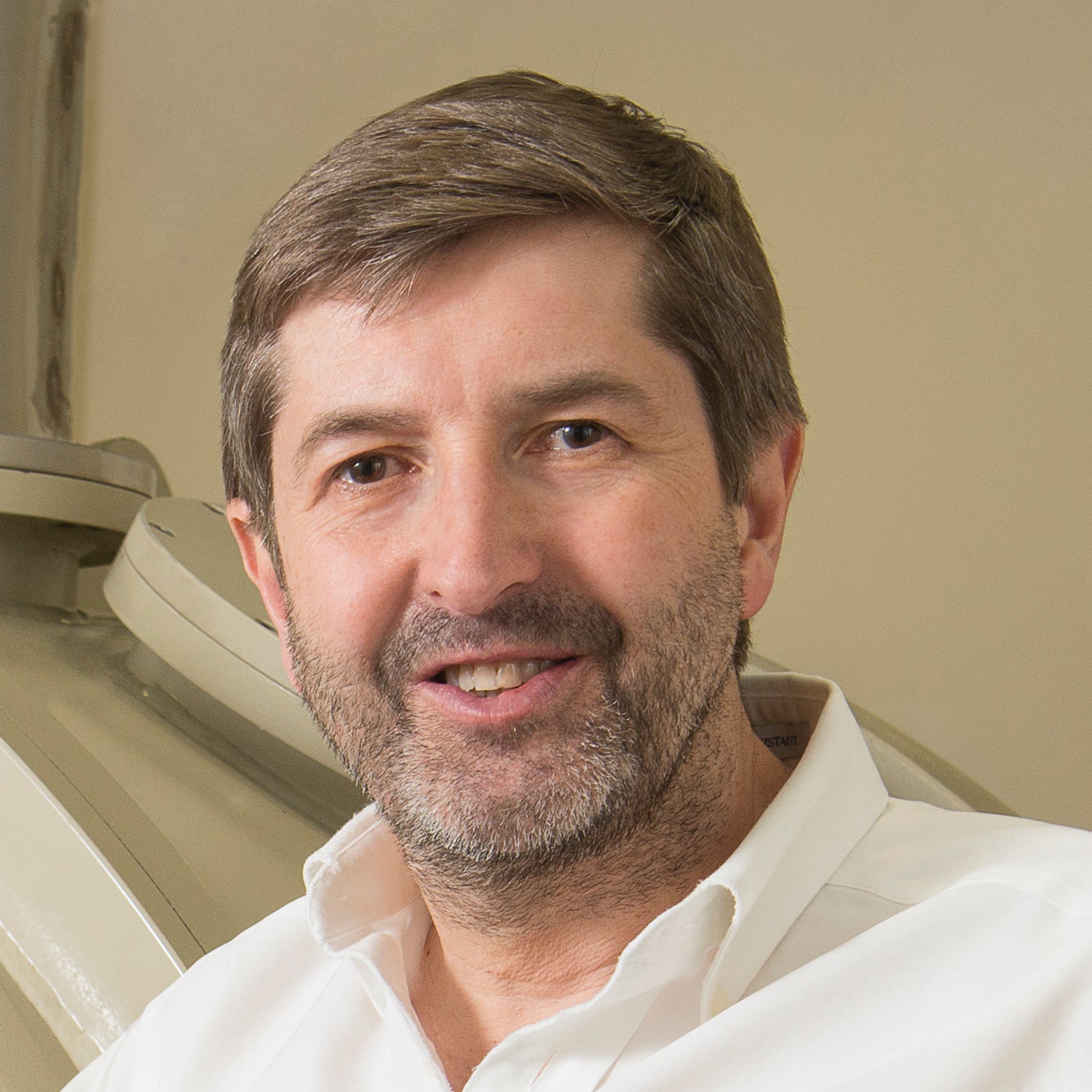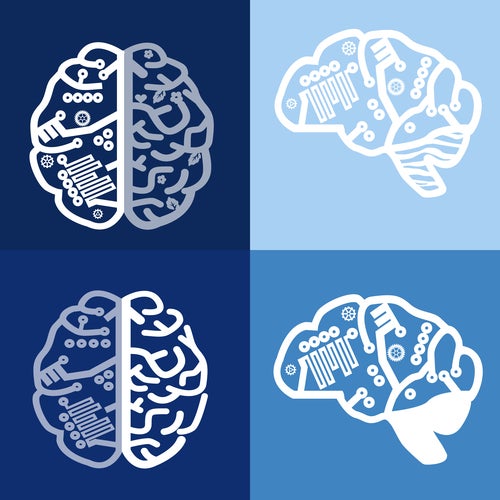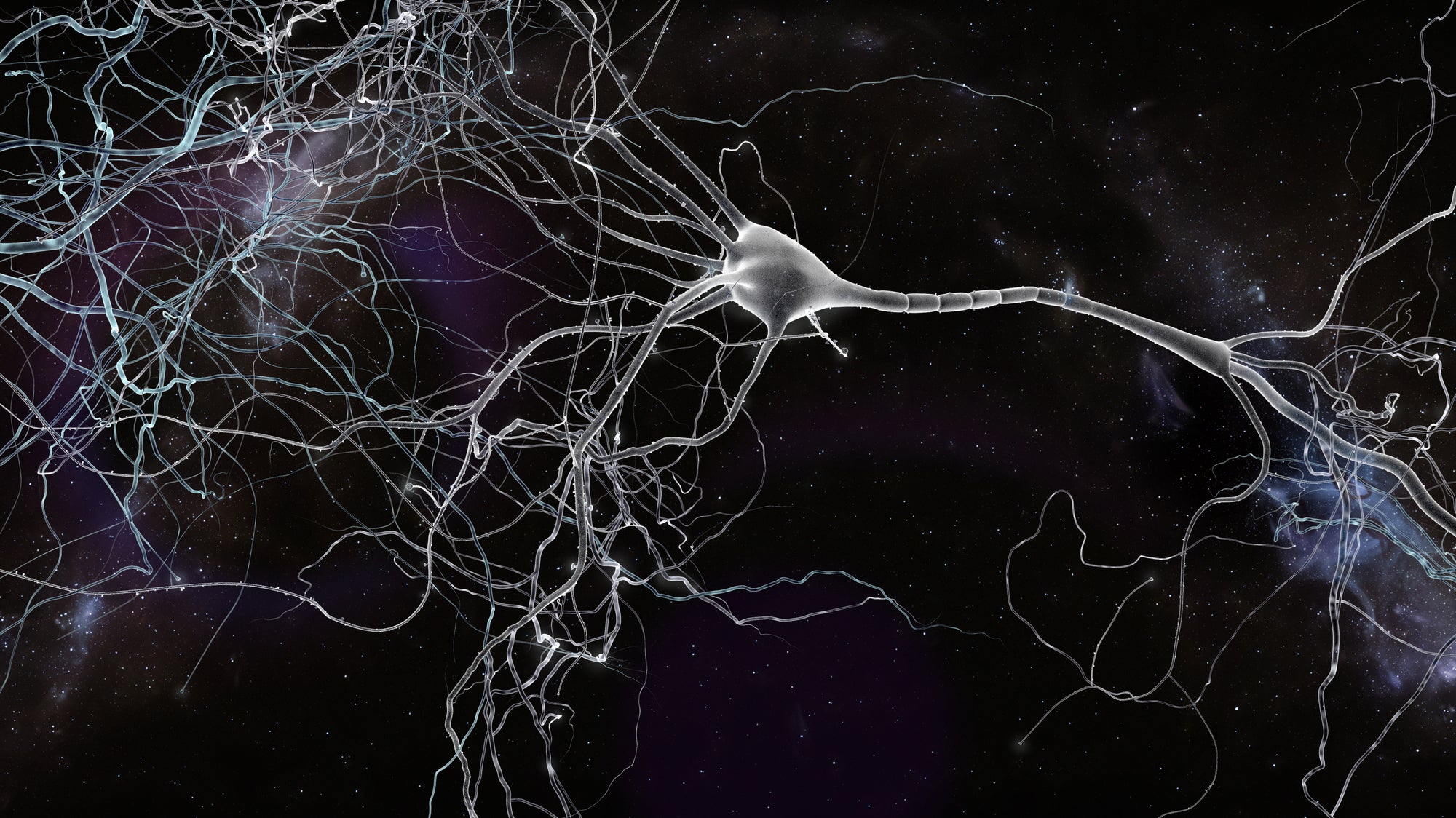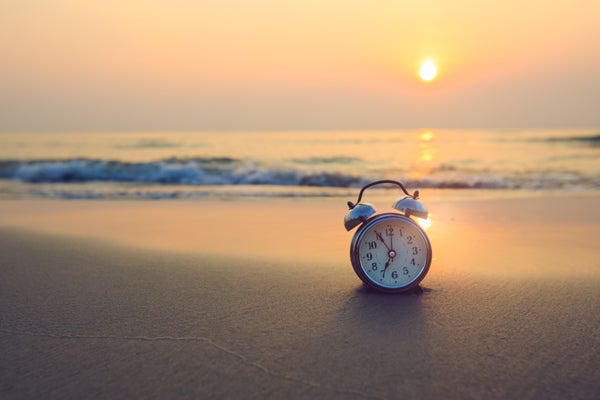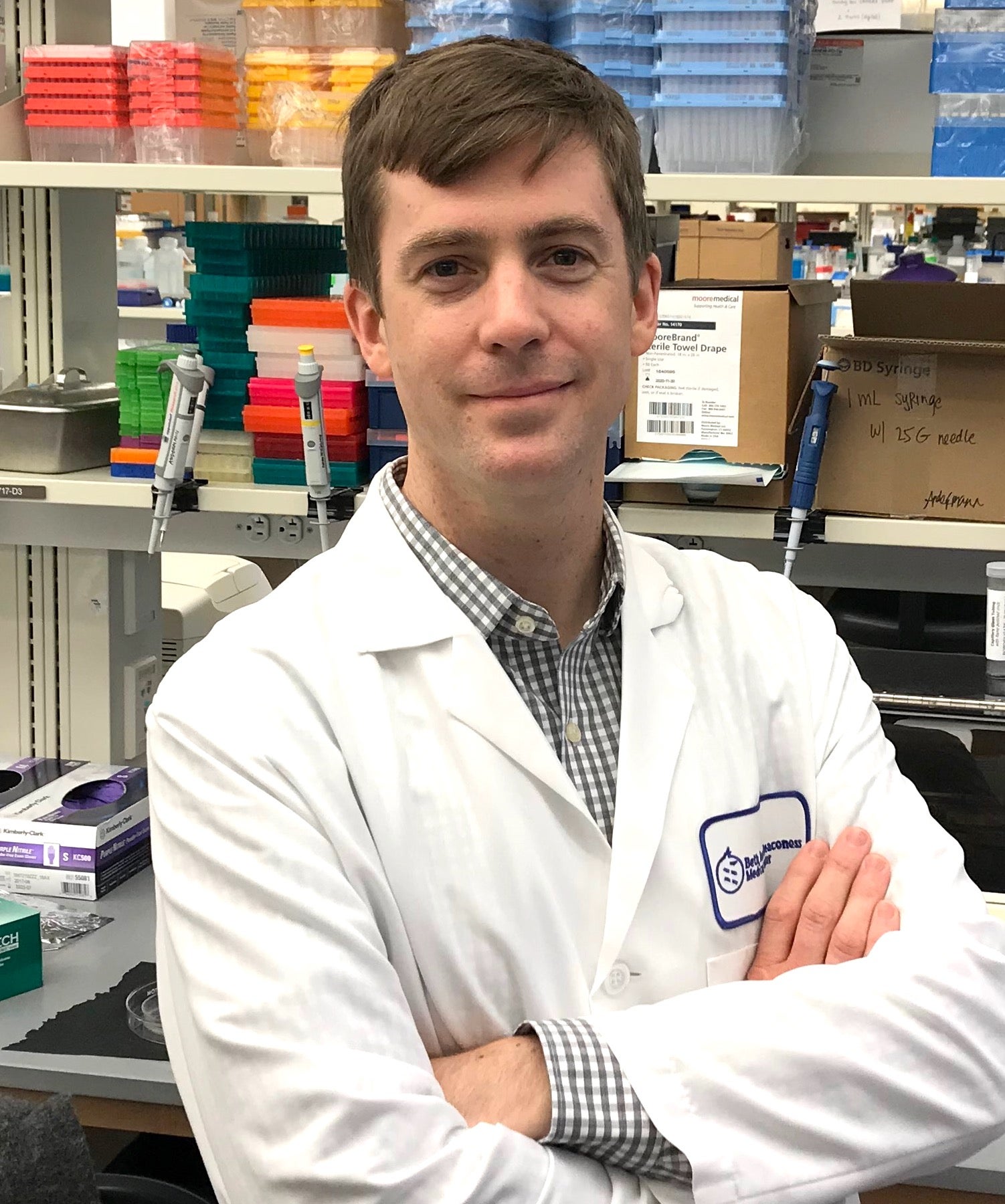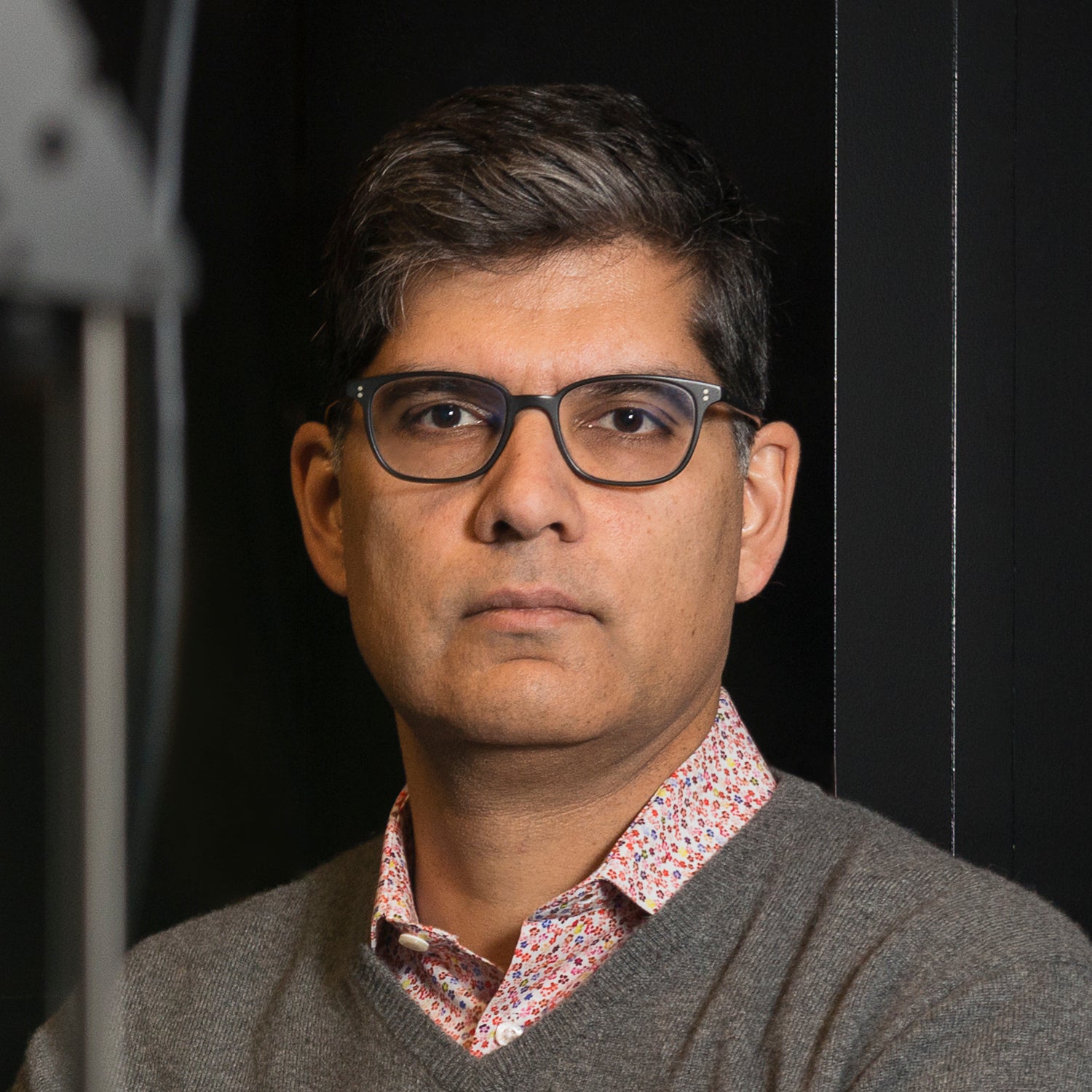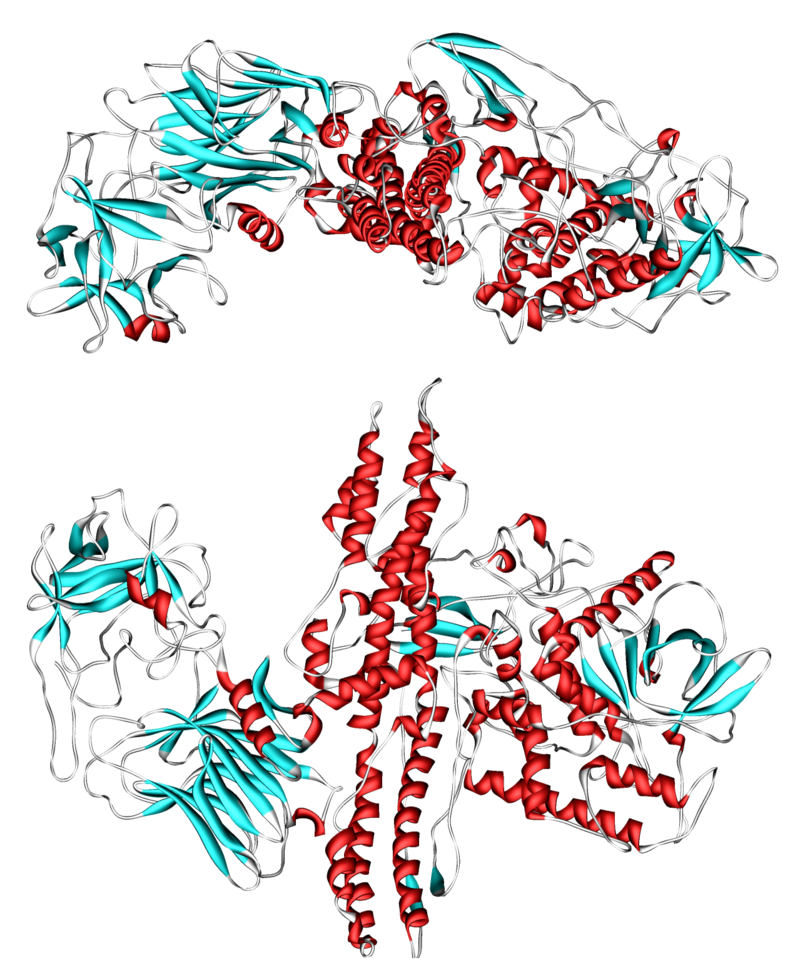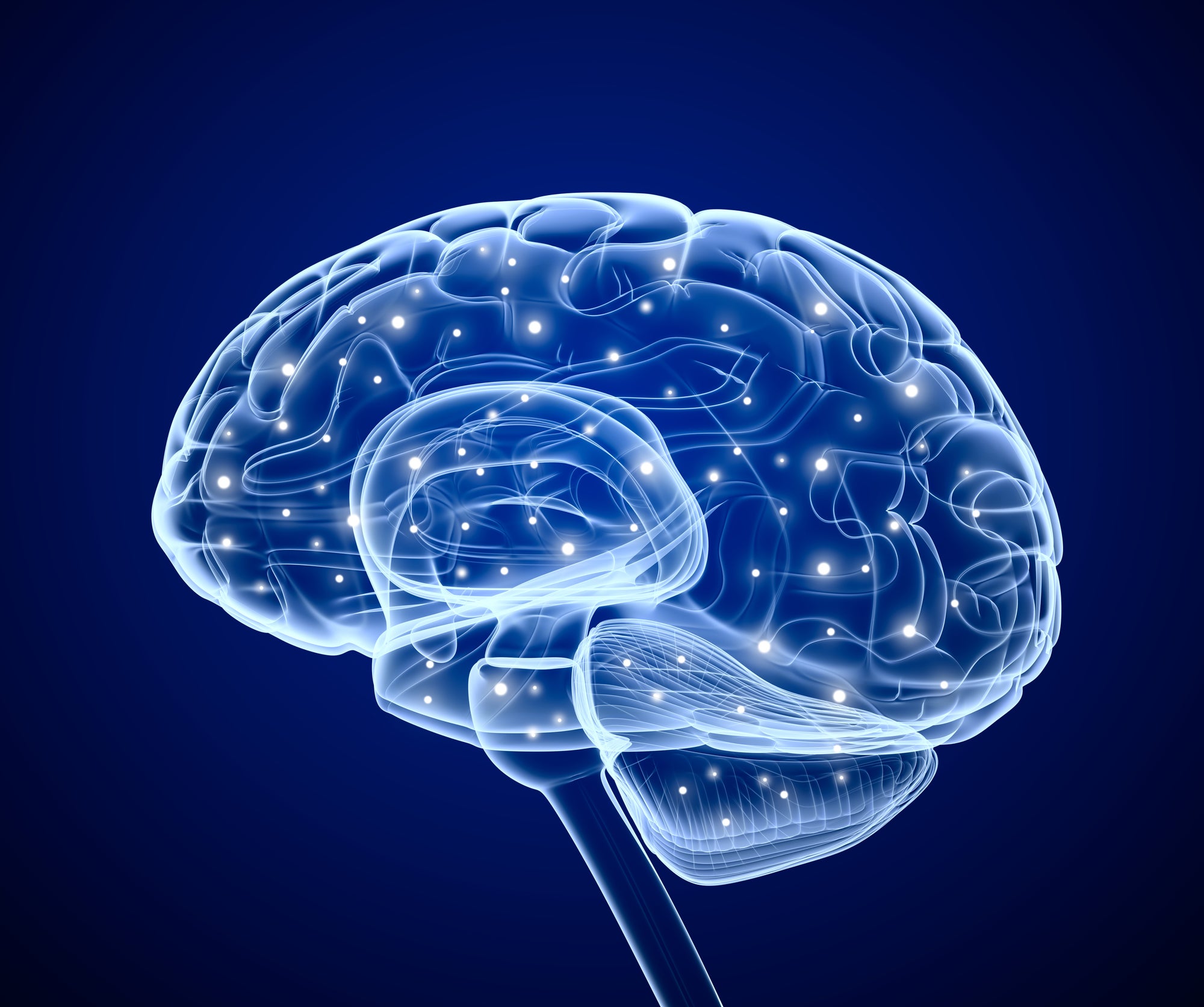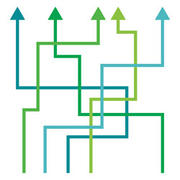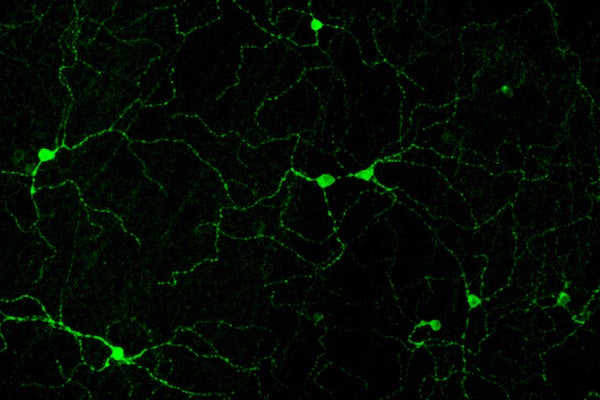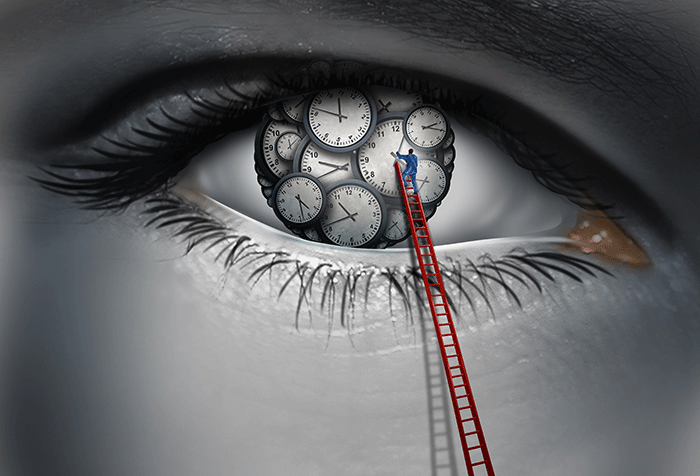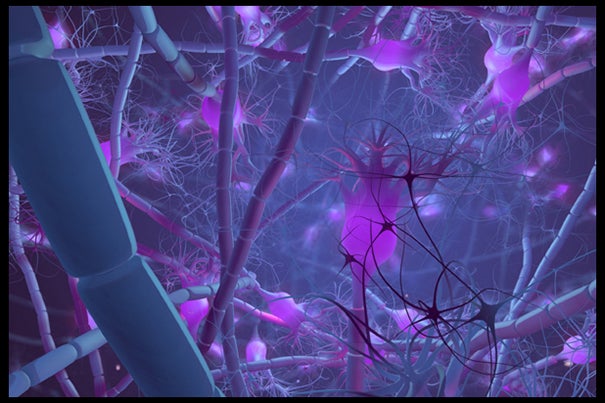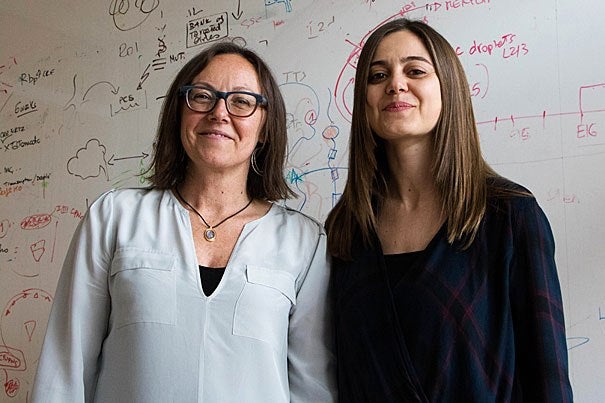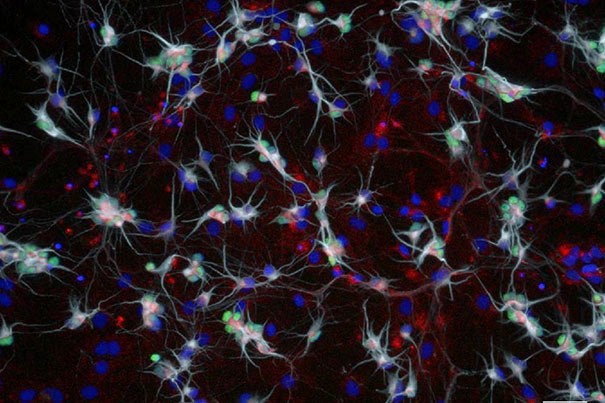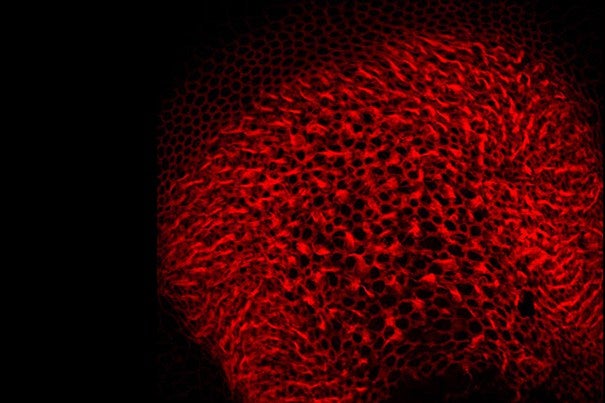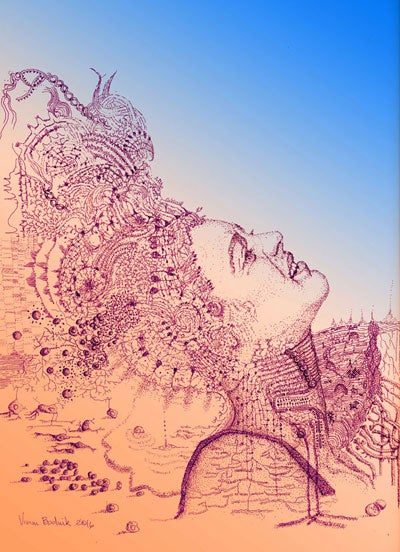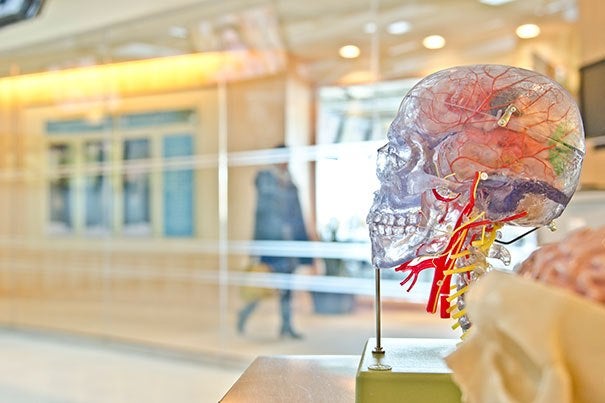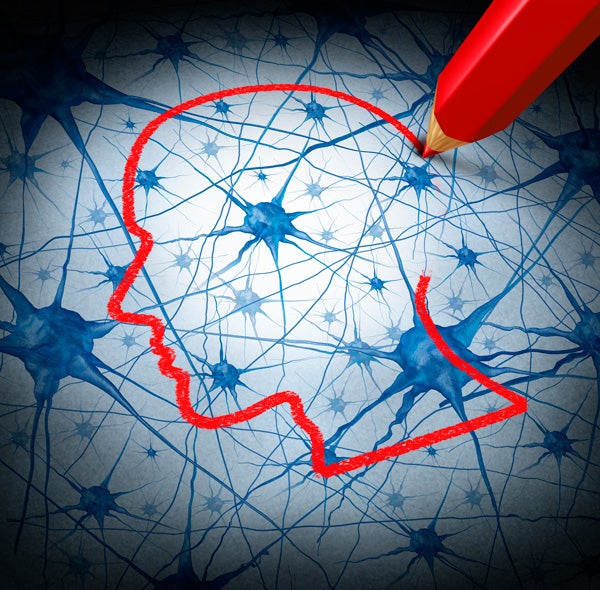Neuro Topics - Sensory and Motor Systems
SEARCH OTHER RESEARCH AREAS
March 27, 2024
Topiramate — an antiseizure medication prescribed to treat epilepsy as well as migraines and bipolar disorder — does not appear to increase the risk of autism spectrum disorder (ASD) among children exposed to it prenatally, according to a new study led by Harvard T.H. Chan School of Public Health.
Original article in: New England Journal of Medicine >
March 14, 2024
New research from Peter Aungle and Ellen Langer finds that an individual’s perception of how much time has elapsed substantially impacts the speed at which minor bruising fades. This is the first study to demonstrate this psychological effect on the physical healing process.
Original article in: Nature Scientific Reports >
February 23, 2024
Researchers from the Wilson Lab gain new insights into how two distinct brain regions — the seat of the compass and the steering center — communicate during navigation.
Original article in: Nature >
February 16, 2024
One cell, the “midget retinal ganglion cell,” carries the vast majority of visual information from the eye to the brain in humans. It has been thought to be a primate-specific innovation, making it impossible to study in accessible model systems. Josh Sanes shares how, using molecular comparison of retinas from 17 vertebrate species, researchers from his team and that of former postdoc Karthik Shekhar, were able to trace back through evolution and identify mouse orthologues of midget cells.
Original article in: Nature >
February 8, 2024
The Engert lab found that in zebrafish, previous visual experience had no effect on the emergence of their optomotor response (OMR). Fish raised in the dark (no visual experience) and fish raised under a strobe light (irregular visual experience) both developed this visually-guided behavior normally.
Original article in: Nature Communications >
February 8, 2024
By combining retinal imaging, genetics, and big data, physician-researchers from Harvard Medical School, Mass. Eye and Ear, Massachusetts General Hospital, and the Broad Institute of MIT and Harvard have found that they can estimate how likely a person is to develop eye and systemic diseases in the future.
Original article in: Science Translational Medicine >
February 8, 2024
A novel gene therapy approach has given five children who were born deaf the ability to hear. The method, which overcomes a roadblock presented by large genes, may be useful in other treatments, according to researchers.
Original article in: The Lancet >
February 2, 2024
The brain controls nearly all bodily functions via spinal projecting neurons that carry command signals from the brain to the spinal cord. As part of a collaborative effort by the BRAIN Initiative Cell Census Network, research co-led by the Zhigang He Lab and Allen Institute for Brain Science used whole-brain imaging and single nucleus transcriptomics to comprehensively profile the anatomy and molecular makeup of these neurons that connect the brain and the body.
Original article in: Nature >
February 2, 2024
Researchers from Mass. General Hospital, University College London, and the University of the Republic in Uruguay found a two-way association between anorexia-related genes and those associated with the morning chronotype (waking early/going to bed early). This contrasts with disorders such as depression, binge eating disorder, and schizophrenia, which are associated with an evening chronotype.
Original article in: JAMA Network Open >
December 7, 2023
Researchers have identified at least one potential link that locks sleep deprivation and chronic pain in an endless loop. Featured in the Harvard Gazette. From Shiqian Shen and colleagues, co-first authors Weihua Ding and Liuyue Yang.
Original article in: Nature Communications >
December 7, 2023
Using mouse and human models, HMS researchers have shown for the first time that a common skin bacterium — Staphylococcus aureus — can cause itch by acting directly on nerve cells. Featured in HMS News and the Harvard Gazette. From Isaac Chiu and colleagues, first author Liwen Deng.
Original article in: Cell >
December 7, 2023
Working with mice, HMS researchers have identified a potential new strategy for replacing retinal ganglion cells to treat glaucoma, one of the leading causes of blindness worldwide. Featured in HMS News From Petr Baranov and colleagues, first author Jonathan R. Soucy.
Original article in: PNAS >
September 13, 2023
HMS News article on new research from David Ginty and colleagues, first author Charalampia Koutsioumpa. Studying mice, they found that sensory neurons develop customized nerve endings based on cues from the skin.
Original article in: Developmental Cell >
August 30, 2023
HMS News article on new research from Chris Harvey, Mike Greenberg, and colleagues, first author Jonathan Green. They identified a specific group of neurons in a brain region involved in navigation that undergo bursts of activity when mice running a maze veer off course and correct their error.
Original article in: Nature >
August 17, 2023
Josh Sanes shares new research from his lab using single cell RNA sequencing to determine the genes expressed by thousands of single cells to complete a cell atlas of the human eye. This now allows scientists to target specific genes when treating conditions such as glaucoma and other ocular diseases.
Original article in: PNAS >
June 13, 2023
Chemosensation is a critical sense through which animals large and small perceive the world around them, yet our understanding of the way in which odorants in the environment are encoded by sensory neurons remains incomplete. Albert Lin and colleagues in the Samuel Lab recorded from chemosensory neurons in the nematode C. elegans as it experienced different odorants, uncovering how olfactory information is encoded in the brain of the worm.
Original article in: Science Advances >
June 7, 2023
Rick Born shares new research where neural recordings in animals trained on perceptual tasks failed to reveal the “usual suspects” of task-related signals in early visual cortex. This surprising negative finding has forced us to re-think exactly what these signals mean.
Original article in: Journal of Neurophysiology >
May 25, 2023
HMS News article on new research from Christopher A. Walsh and Kristopher T. Kahle, co-first authors Sattar Khoshkhoo and Yilan Wang, examining the role of somatic mutations — DNA alterations that occur after conception — in Temporal Lobe Epilepsy (TLE) and suggesting the potential of using existing cancer therapies to treat TLE that is resistant to anti-seizure medications.
Original article in: JAMA Neurology >
May 11, 2023
HMS News article on new research from David Corey, Artur A Indzhykulian, and colleagues, first author Maryna Ivanchenko. Using mice, the team designed a “mini gene” that could in the future be developed into a therapy for Usher Syndrome type 1F, a severe genetic condition that causes blindness and deafness.
Original article in: Nature Communications >
May 11, 2023
Harvard MCB Department news article on new research from Venkatesh Murthy and colleagues, co-first authors Alice Berners-Lee and Elizabeth Shtrahman, examining how odor mixtures are represented in the piriform cortex of mice while they learn to discriminate a unique target odor mixture from hundreds of other odor mixtures. They found that with time the target mixture becomes over-represented--meaning more neurons of this brain region become selective for the target odor mixture than they were at
Original article in: PLOS Biology >
May 5, 2023
Shan Meltzer and Emmanuella Asante share new research from the Ginty lab showing that the clustered protocadherin gamma (Pcdhg) gene locus regulates somatosensory neuron synapse formation, mechanosensory neuron branching patterns, and circuit assembly in the mechanosensory dorsal horn.
Original article in: Cell >
April 25, 2023
Loss of the inner ear sensory cells, the hair cells, is considered one of the most common causes of hearing loss that is generally permanent. Using single-cell RNAseq, advanced imaging, electrophysiology, and lineage tracing, Yizhou Quan, Zheng-Yi Chen, and colleagues identified a cocktail of drug-like molecules that effectively reprograms fully mature wildtype supporting cells for hair cell regeneration, representing a step forward for hearing restoration by HC regeneration.
Original article in: PNAS >
April 20, 2023
The lab of Nick Bellono, along with colleagues at UC San Diego and UT Southwestern Medical Center, recently published two papers in Nature describing the path of divergent sensing capabilities in cephalopods by tracking their evolutionary lineage from common ancestral neurons.
Original article in: Nature >
April 20, 2023
Harvard Gazette article profiling the research of postdoc Carolyn Elya (lab of Benjamin de Bivort) into how a parasitic fungus hijacks the nervous system of flies and uses mind control to manipulate behavior as the insects near death
Original article in: Nature >
March 31, 2023
The lab of Stephen Liberles was featured in Science News for their recent paper illuminating how the brain becomes aware that there is an infection in the body.
Original article in: Nature >
March 31, 2023
HMS News article on new research from Brad Manor and colleagues, co-first authors Junhong Zhou and Gabriele Cattaneo, finding that that the ability to dual-task when walking starts to decline by the age of 55, up to a decade before old age, as traditionally defined by the threshold of 65 years.
Original article in: Lancet Healthy Longevity >
March 9, 2023
HMS News article on new research from Joseph DeGutis and colleagues suggesting that as many as one in 33 people (3.08 percent) may meet the criteria for face blindness, or prosopagnosia.
Original article in: Cortex >
March 3, 2023
Harvard Gazette article on new research from Yun Zhang and colleagues, co-first authors Taihong Wu and Minghai Ge, illuminating how pathogens — and pheromones — alter social behavior in animals.
Original article in: Nature >
February 24, 2023
Harvard Gazette article on new research from Jeremy Wolfe and colleagues, showing that while people often think their memory is terrible, they can recall where and when an object appeared with good, if not perfect, precision for a large number of objects.
Original article in: Current Biology >
February 24, 2023
Harvard Gazette article on new research from Kathryn Rexrode and colleagues, first author Alexandra C Purdue-Smithe, finding that women with pre-pregnancy migraines have a greater risk of complications, including preterm delivery, gestational hypertension, and pre-eclampsia.
Original article in: Neurology >
January 25, 2023
HMS News article on new research from Sandeep Robert Datta, David Brann, Tatsuya Tsukahara, and colleagues at Duke Health and UC San Diego, finding that long-term loss of smell may be linked to an ongoing immune assault on olfactory nerve cells and an associated decline in the number of those cells.
Original article in: Science Translational Medicine >
January 13, 2023
Retinal axons convey parallel streams of visual features from the eye to the rest of the brain. A new study from the Andermann and Chen labs looks at how serotonin can filter this visual information at the level of retinal axons.
Original article in: Neuron >
December 8, 2022
HMS News article on two new research papers from David Ginty, Chris Harvey, and colleagues, first authors Josef Turecek, Anda Chirila, and Genelle Rankin, suggesting the spinal cord and brainstem are essential for processing touch signals as they travel to the brain.
Original article in: Cell >
November 28, 2022
HMS News article on new research from Isaac Chiu and colleagues, first author Daping Yang, illuminating how pain neurons shield the gut from damage.
Original article in: Cell >
November 28, 2022
Round up of awards and honors earned by the HBI Community
Original article in: Cell >
Exploring the Molecular Dynamics of Hearing: Ion Channels That Convert Sound into Electrical Signals
October 5, 2022
Nurunisa Akyuz of the Corey lab describes a new study focused on the inner-ear mechanosensory channel, TMC1 (Transmembrane Channel Like 1). Structural modeling, mutagenesis, viral gene delivery and hair-cell physiology experiments were used to determine aspects of TMC1 gating.
Original article in: Science Advances >
September 20, 2022
HMS News article on new research from the labs of Christopher Harvey and Michael Greenberg, first author Noah Pettit, and second author Lynn Yap, finding that a gene called Fos is a key player in spatial mapping. It helps the brain use specialized navigation cells to form and maintain stable representations of the environment.
Original article in: Nature >
September 20, 2022
HMS News article on new research from Matthew Crowson, Christopher Hartnick, and colleagues at HMS and Mass. Eye and Ear. They built an artificial intelligence model that they have shown to outperform clinicians in diagnosing pediatric ear infections.
Original article in: Otolaryngology–Head and Neck Surgery >
September 16, 2022
Yuqin Yin and Larry Benowitz describe a new study using RNA sequencing and bioinformatics to identify the transcription factor REST (a.k.a. NRSF) as a key repressor of the genetic program required for neurons to regenerate axons in the central nervous system. Counteracting the inhibitory effects of REST enhances the ability of retinal ganglion cells to regenerate axons through the injured optic nerve and of cortical neurons to regenerate axons in the corticospinal tract.
Original article in: Nature Communications >
August 1, 2022
HMS News article on new research from Bob S. Carter, Leonora Balaj, and colleagues, first author Syeda Maheen Batool, describing improvements in a blood test for gene mutations linked to gliomas, the most common type of adult brain tumors. The test previously focused on mutations in the TERT gene, and now has added capability to detect mutations in the EGFR gene.
Original article in: Clinical Cancer Research >
August 1, 2022
HMS News article profiling the research of Bruce Bean and Clifford Woolf, who are studying how CBD inhibits pain-sensing neurons in order to develop more effective pain medicines.
Original article in: Clinical Cancer Research >
August 1, 2022
Harvard Gazette article on new research from Samuel Mehr and colleagues, co-first authors Courtney Hilton and Cody J. Moser. They studied 21 cultures, from San Diego to East Africa and found striking similarities in infant-directed speech and song.
Original article in: Nature Human Behavior >
July 22, 2022
Neurons called retinal ganglion cells (RGCs) send axons from the retina to the rest of the brain through the optic nerve. When the optic nerve is crushed, most RGCs die and few if any survivors regrow new axons. The labs of Josh Sanes (Harvard) and Zhigang He (Boston Children’s Hospital) recently published two papers defining gene expression programs that regulate RGC survival and regeneration.
Original article in: Neuron >
July 15, 2022
HMS News article on new research from Hadine Joffe and colleagues, first author Alexandra Z. Sosinsky, showing that females are underrepresented in key disease clinical trials, with the largest gap observed in psychiatric clinical trials.
Original article in: Contemporary Clinical Trials >
July 15, 2022
HMS News article on the development of a new word-score model from Stéphane Maison and colleagues, first author Kelsie J. Grant, which leads to better evaluations of cochlear nerve damage.
Original article in: Scientific Reports >
June 30, 2022
HMS News profiling PiNBAC, a new post-bac program that seeks to increase diversity in neuroscience by providing research experience and professional development to college graduates from underrepresented groups. PiNBAC is led by Tari Tan and Bob Datta of the Dept of Neurobiology at HMS.
Original article in: Scientific Reports >
June 30, 2022
HMS News article on new research from Stephen Liberles and colleagues, first author Chuchu Zhang, using mice to describe how different cell types in the brain work together to suppress nausea.
Original article in: Cell Reports >
June 30, 2022
Harvard Gazette article on new research from Sydney Cash, Leigh R. Hochberg, and colleagues, first author Daniel B. Rubin, may help explain how humans form memories and learn, and could eventually aid the development of assistive tools for people affected by neurologic disease or injury.
Original article in: Journal of Neuroscience >
June 30, 2022
Harvard MCB News article on new research from the lab of Venki Murthy, first author Nuné Martiros, providing insight into the workings of neural circuits in the ventral striatum’s olfactory tubercle during odor association learning.
Original article in: eLife >
June 23, 2022
Do face neurons respond to the semantic category of faces, or to visual features associated with faces? Alex Bardon and Will Xiao in the labs of Gabriel Kreiman, Marge Livingstone, and Carlos Ponce use generated images to find that face neurons are better described as tuned to visual attributes associated with faces.
Original article in: PNAS >
May 24, 2022
Harvard Gazette article on new research from Matthias Nahrendorf and colleagues, co-first authors Fadi E. Pulous and Jean C. Cruz-Hernández, finding that cerebrospinal fluid (also known as “brain water”) can exit the brain into the skull’s bone marrow through tiny channels in the skull, and this may be key to detecting infection and injury.
Original article in: Nature Neuroscience >
May 4, 2022
Harvard Gazette article on new research from Yun Zhang and colleagues, co-first authors He Liu and Taihong Wu, showing that forgetting generates a novel brain state that is different from the one before learning happened or the one that exists after a memory is formed.
Original article in: Science Advances >
May 4, 2022
HMS News article from Claude Desplan (NYU) and colleagues, co-first authors Nikolaos Konstantinides, Isabel Holguera, and Anthony M. Rossi, on new research uncovering factors that regulate neuron development in fruit fly visual system.
Original article in: Nature >
April 21, 2022
Harvard Medicine News Q+A with Aleena Garner about her research, focusing on how memory affects perception of visual and auditory information.
Original article in: Nature >
April 21, 2022
Harvard Gazette article on a recent conversation with between Harvard’s Mind Brain Behavior Interfaculty Initiative with Professor of Psychology Jesse Snedeker and Professor and author Avi Loeb. This panel discussed the potential challenges of communicating with aliens who may be much more intelligent than us.
Original article in: Nature >
April 21, 2022
Harvard Gazette article on new research from Anne Oaklander and colleagues, suggesting that that some patients with long COVID have lasting nerve damage that appears to be caused by a potentially treatable infection-triggered immune dysfunction.
Original article in: Neurology: Neuroimmunology & Neuroinflammation >
April 21, 2022
Harvard Health Publishing article discussing recent research suggesting that cataract surgery may protect against dementia.
Original article in: Neurology: Neuroimmunology & Neuroinflammation >
April 21, 2022
Round-up of awards and honors earned by the HBI community.
Original article in: Neurology: Neuroimmunology & Neuroinflammation >
March 9, 2022
Jenny Lu and colleagues in Rachel Wilson’s lab share new work on a neural circuit in the fly that transforms velocity from body-centric to world-centric reference frames. This work reveals how vector computations can be performed in the brain.
Original article in: Neurology: Neuroimmunology & Neuroinflammation >
February 25, 2022
Allison E. Hamilos from the lab of John Assad shares new insights into the role of dopaminergic signaling in modulating the moment-to-moment probability of planned movement.
Original article in: eLife >
February 24, 2022
Harvard Gazette article on a recent panel sponsored by the Harvard Mind Brain Behavior Initiative featuring Kirk R. Daffner, Daniel L. Schacter, and Susanna C. Siegel using the plot of the film Memento to discuss memory, amnesia, and personality.
Original article in: eLife >
February 7, 2022
Harvard Gazette Q+A with Alexandra Touroutoglou about her research on 'super agers' and a related new study getting underway to test whether a neurostimulation intervention can restore function in those experiencing age-related decline.
Original article in: eLife >
February 7, 2022
Harvard Gazette article on new research from Alberto Ascherio, Kassandra L. Munger, and colleagues, first authors Kjetil Bjornevik and Marianna Cortese, providing the first compelling evidence of causality between Epstein-Barr and MS.
Original article in: Science >
January 21, 2022
Round up of awards and honors earned by the HBI community.
Original article in: Science >
January 21, 2022
HMS News article on a new discovery by Sean Megason and colleagues, first author Akankshi Munjal, of mechanical process by which sheets of cells morph into the delicate, looping semicircular canals of the inner ear.
Original article in: Cell >
January 21, 2022
HMS News article on new research from Isaac Chiu and colleagues, first author Nicole Yang, suggesting that anthrax has an unexpected benefit— one specific type of anthrax toxin can silence multiple types of pain in animals.
Original article in: Nature Neuroscience >
January 18, 2022
The Tan-Yang Center seeks a Program Manager who will be responsible for planning scientific events and outreach activities, running a postdoctoral fellowship program, managing a website, newsletter, and social media, developing new community-building activities, and liaising with the related scientific and administrative units at Harvard University, as well as our sister Center at the McGovern Institute at MIT.
Original article in: Nature Neuroscience >
January 3, 2022
How does the brain represent the visual world around us? In this study from the lab of Carlos Ponce, led by Olivia Rose and James Johnson, visual cortex neurons “team up” with machine learning models to generate synthetic images—revealing the density of information in such representations.
Original article in: Nature Communiccation >
December 9, 2021
Harvard Gazette article on the establishment of the Kempner Institute for the Study of Natural and Artificial Intelligence at Harvard, launched with a $500M gift from Priscilla Chan and Mark Zuckerberg. The Institute will be led by neurobiologist Bernardo Sabatini of Harvard Medical School and computer scientist Sham Kakade of the University of Washington, who will join the Harvard faculty in January 2022.
Original article in: Nature Communiccation >
December 7, 2021
Aleena Garner, a new faculty member in the Department of Neurobiology at HMS, describes her latest research, together with Georg Keller of the Friedrich Miescher Institute for Biomedical Research, on how neural circuits between auditory and visual cortex communicate learned associations and create predictions. They show that experience with an audio-visual stimulus reshapes direct input from auditory cortex to visual cortex—suppressing predictable visual input to amplify the unpredictable.
Original article in: Nature Neuroscience >
December 6, 2021
Jiarui Wang and colleagues in the Kreiman lab share key insights from a study of invasive neurophysiological activity from 48 human subjects to build a map of functional connections in the cerebral cortex at the mesoscale. These results (www.braininteractome.com) can help neurologists to better understand pathology, and neuroscientists to better understand computations in the human brain.
Original article in: Cell Reports >
November 17, 2021
Bruna Paulsen of the Arlotta lab at Harvard, together with colleagues Rogelio Hernandez-Lopez and Laura Peña-Hernandez, describes the outreach work of Science Clubs International, a STEM outreach organization that serves students in eight different countries. They highlight in particular the 2021 online edition of Clubes de Ciencia, supported by a grant from the American Society for Cell Biology.
Original article in: Cell Reports >
November 15, 2021
Meng Zhang of the Zhuang lab describes new work using a single-cell transcriptome-imaging method, MERFISH, to generate a detailed cell map of the mouse primary motor cortex (MOp), revealing nearly 100 molecularly defined cell types and their spatial locations. Integrating MERFISH with retrograde tracing technique further allowed the team to understand how these different cell types connect with other brain regions.
Original article in: Nature >
November 12, 2021
HMS News article on new research from Qiufu Ma and colleagues, co-first authors Shenbin Liu and Zhifu Wang, elucidating the underlying neuroanatomy of acupuncture that activates a specific signaling pathway.
Original article in: Nature >
November 12, 2021
HMS News article on new research from Albert Edge and colleagues, first author Yushi Hayashi, identifying the role of the protein behind rare Norrie disease.
Original article in: PNAS >
November 12, 2021
Boston Children's Hospital Answers article highlighting the research of Annapurna Poduri and the Epilepsy Genetics team at Boston Children's Hospital.
Original article in: PNAS >
November 12, 2021
Round up of awards and honors earned by the HBI community.
Original article in: PNAS >
November 10, 2021
Luis Hernandez-Nunez shares new research conducted as a part of his PhD research in the lab of Aravinthan Samuel uncovering new molecular receptors, cells, circuits and behavioral strategies that underlie the thermosensitivity of fly larvae.
Original article in: Science Advances >
November 6, 2021
Abdulkadir Canatar, Blake Bordelon and Cengiz Pehlevan share new research exploring why neural networks do not overfit.
Original article in: Science Advances >
November 2, 2021
Sarah Melzer from the Sabatini lab shares new work on the functions of the neuropeptide GRP in regulating fear memories. Their work highlights the mechanisms through which GRP modulates a specialized neuronal circuit in the cortex during fear conditioning.
Original article in: Cell >
October 26, 2021
Round up of awards and honors earned by the HBI community.
Original article in: Cell >
October 26, 2021
HMS News article on new research from the labs of David Ginty and Christopher Harvey, with first authors Brendan P. Lehnert and Celine Santiago, that reveals mechanisms that may underlie the greater sensitivity of certain skin regions.
Original article in: Cell >
September 29, 2021
Harvard Gazette article summarizing a recent online lecture by Carole Hooven on the wide-reaching effects of testosterone in the human body, and across society, powering acts of aggression, violence, and the large disparity in their commission between men and women.
Original article in: Cell >
September 29, 2021
Harvard MCB Department News article on new research from the lab Aravi Samuel, first author Vladislav Susoy, using whole-brain calcium imaging to examine the mechanisms behind the mating behavior of male worms at single-neuron resolution.
Original article in: Cell >
September 14, 2021
HMS News article on new research from Frank Scheer and colleagues showing that the endogenous circadian system plays a significant role in modulating pulmonary function and asthma severity independent of sleep and other daily behavioral or environmental cycles.
Original article in: PNAS >
September 14, 2021
Harvard Gazette Q+A with Michael Pollan on his new book investigating how opium, caffeine, and mescaline affect the mind.
Original article in: PNAS >
September 14, 2021
Boston Children's Hospital Answers article on new research from the labs of Basil Darras and colleagues showing that the oral drug Risdiplam improves motor function in infants, including the ability to sit unassisted for a period of time. They were also more likely than the controls to achieve motor milestones and lived longer than would be expected.
Original article in: New England Journal of Medicine >
August 11, 2021
Round up of awards and honors earned by the HBI community.
Original article in: New England Journal of Medicine >
August 11, 2021
Harvard Gazette article on new research from the lab of Paul Shamble, first author Massimo De Agrò, demonstrating that jumping spiders can distinguish between animate and inanimate objects — an ability previously detected only in humans and other vertebrates.
Original article in: PLOS Biology >
July 29, 2021
HMS News article on new research from the lab of Bradford Lowell and colleagues, first author Janet Berrios, on how neurons and the feeling of hunger they cause actually drive an animal to find and consume food.
Original article in: Nature >
July 29, 2021
HMS News article on new research from Clas Linnman and colleagues, on the development of a new imaging technique allowing researchers to capture images of injuries caused by whiplash that previously eluded scans.
Original article in: Pain >
July 13, 2021
Ken Tao and Brad Lowell share a new study characterizing vagal motor neurons that innervate the digestive system. This work demonstrates a labeled-line model of the vagus motor nerve where genetically-defined subtypes of vagal motor neurons project to specific regions of the digestive system and engage neurochemically-distinct subtypes of enteric neurons.
Original article in: Neuron >
June 21, 2021
Lili Xie shares new research from the lab of Larry Benowitz showing that the chemokine CCL5 promotes optic nerve regeneration and mediates many of the beneficial effects of Ciliary neurotrophic factor (CNTF) gene therapy.
Original article in: PNAS >
June 4, 2021
Harvard Gazette Q+A with David R. Williams on the mental and physical tolls discrimination take on Black lives and what individuals can do to help mitigate them.
Original article in: PNAS >
June 4, 2021
Harvard Gazette article profiling the research of Deirdre Barrett into how our dreams have changed during the COVID-19 pandemic.
Original article in: PNAS >
June 4, 2021
Harvard Gazette article on new research from a collaboration of more than 50 international scientists finding that Neanderthals and ancient humans adapted to eating starch-rich foods as far back as 100,000 years ago.
Original article in: PNAS >
May 5, 2021
Miao He, Jessica Page and Zhigang He share a new study achieving precise targeting of intra-spinal propriospinal networks with targeted non-invasive AAV vector labeling. Selectively modulating specific populations of propriospinal neurons in injured and paralyzed mice resolved their contributions to key locomotor behaviors-- demonstrating the potential of this strategy for functional restoration following spinal cord injury.
Original article in: Nature Communications >
May 4, 2021
HMS News article on new research from Jochen Lennerz and colleagues uncovering the molecular and cellular mechanisms behind cold-induced tooth pain and hypersensitivity.
Original article in: Science Advances >
May 4, 2021
HMS News article on new research from Stephen Liberles and Nao Horio into the neurobiology that underlies food attraction and how hungry mice choose to pay attention to one object in their environment over another.
Original article in: Nature >
April 23, 2021
HMS News article highlighting a new project from Max Heiman, Keith Blackwell, and Monica Colaiácovo, looking into why some species of wild Caenorhabditis elegans are able to thrive in in high temperature environments.
Original article in: Nature >
April 23, 2021
HMS News article on new research from K. Frank Austen and Isaac Chiu, first author Tiphaine Voisin, suggesting that cysteine leukotriene receptor 2 (CysLT2R) may be a new target for designing treatments to target intractable chronic itch.
Original article in: PNAS >
April 23, 2021
HMS News article on new research from the lab of Connie Cepko, first author Yunlu Xue, marking an important first step in developing a gene therapy to treat retinitis pigmentosa, or RP, an inherited form of progressive blindness that affects around 20 million people worldwide.
Original article in: eLife >
March 26, 2021
Jing Peng and Ivan Santiago share new research revealing a temporally precise transcriptional cascade that orchestrates the assembly of synaptic layers in the fly visual system. This story is a special piece honoring the memory of their mentor Matt Pecot, who sadly passed away in 2019, with words of remembrance in addition to the scientific update.
Original article in: PNAS >
March 25, 2021
MohammadMehdi Kafashan and Anna Jaffe share their work on the saturation of sensory information in larger neuronal populations, as well as on how this information is distributed across the many neurons in these populations.
Original article in: Nature Communications >
March 24, 2021
Jesse Marshall (Olveczky Lab) shares research on a new technique they developed, CAPTURE, that allowed them to continuously track the position of the head, trunk, and limbs of freely behaving rats over days and weeks. CAPTURE provides an unprecedentedly detailed portrait of rat behavior, and opens the door to new advances in understanding the mathematical structure of natural behavior, the behavioral effects of drugs and disease, and the relationship between movement and the brain.
Original article in: Neuron >
March 19, 2021
Katrin Vogt shares new research from the lab of Aravi Samuel identifying how feeding state-dependent neuronal modulations affect processing of olfactory information and olfactory choice behavior in Drosophila larvae.
Original article in: Science Advances >
March 9, 2021
Harvard Gazette article on new research from Naomi Pierce and colleagues, first author Marjorie A. Liénard, describing a novel method for isolating opsins, light-sensitive proteins found in the eyes of insects, and detailing their molecular history, structure, and function to determine what colors an insect can see.
Original article in: PNAS >
February 26, 2021
HMS News article on research from the labs of David Corey and Wesley Wong, first author Eric Mulhall, providing new insight into the functioning of the tip link—the tiny apparatus of hair cells in the ear that converts auditory signals into electrical ones.
Original article in: Nature Communications >
February 23, 2021
Congratulations to Masahito Yamagata, Isle Bastille, Kadir Ozkan, Carla Carol Winter, Ayush Noori, and Clara Muñoz-Castro
Original article in: Nature Communications >
January 28, 2021
Pint-Sized Science, a podcast of Science in the News, features HBI co-director Venkatesh Murthy. In an interview with graduate students Ana-Andreea Stoica (Columbia Univ) and Anastasia Repouliou (Harvard Univ), Murthy discusses our sense of smell—why it matters, how it works, and what are some of the big questions in olfaction research today.
Original article in: Nature Communications >
January 28, 2021
HMS News article on new research from the labs of Wei-Chung Allen Lee and colleagues, co-first authors Jasper Phelps, David Grant Colburn Hildebrand, and Brett J. Graham, on the development of GridTape, an automated electron microscopy system enabling comprehensive, high-resolution imaging of large neural circuits.
Original article in: Cell >
January 5, 2021
Kameron Clayton shares new research from the lab of Daniel Polley. Using a combination of physiological and anatomical tools to access specific types of cortical neurons, they demonstrate that descending projection neurons in mouse auditory cortex are active prior to movements that are expected to generate sound.
Original article in: Current Biology >
November 13, 2020
Seungwon (Sebastian) Choi shares new research from the labs of David Ginty and colleagues at the University of Pittsburgh. They applied new mouse genetic tools in conjunction with anatomical, physiological and behavioral approaches to better understand the functional organization of ascending touch, thermal and pain pathways.
Original article in: Nature >
November 13, 2020
Tatsuya Tsukahara shares new research from the lab of Sandeep Robert Datta, on the use of their Motion Sequencing (MoSeq) behavioral analysis technique, built on 3D animal postures and unsupervised machine learning, to organize large and complex behavioral datasets from mice treated with neuroactive and psychoactive drugs.
Original article in: Nature Neuroscience >
November 12, 2020
Jaeeon Lee shares new research from the lab of Bernardo Sabatini confirming that distinct pathways of the basal ganglia remain segregated in all the output nuclei of the basal ganglia when sensory information is transformed to motor commands.
Original article in: Nature Neuroscience >
November 2, 2020
MCB News piece on new research from the Bellono lab, first author Lena van Giesen, uncovering the molecular basis of chemotactile sensation in octopuses.
Original article in: Cell >
November 2, 2020
Harvard Gazette article on new research from Harvard’s Music Lab, revealing that infants relax in response to lullabies even when those lullabies are in an unfamiliar foreign language. Co-first authors Constance M. Bainbridge and Mila Bertolo, senior author Samuel A. Mehr.
Original article in: Nature Human Behavior >
October 30, 2020
Johannes Bill of the Drugowitsch and Gershman labs explores how our brains might exploit hierarchical motion relations when solving perceptual tasks.
Original article in: PNAS >
October 14, 2020
Davide Valeriani shares new research from the Dystonia and Speech Motor Control Laboratory on the development of DystoniaNet, a 3D convolutional neural network capable of diagnosing dystonia from raw structural MRI data.
Original article in: PNAS >
October 6, 2020
Round up of awards and honors earned by the HBI community.
Original article in: PNAS >
October 2, 2020
Hajnalka “Sunny” Nyitrai shares new research from the lab of Pascal Kaeser addressing how neurons transport material to the synapse and how they ensure delivery to the appropriate destinations.
Original article in: Cell Reports >
October 1, 2020
Michael Do shares new findings from his lab on the question of why humans and other primates see more sharply than other mammals.
Original article in: Neuron >
September 29, 2020
Caroline Palavicino-Maggio writes about the Journal of Emerging Investigators Mini PhD Camp, a unique program introducing underserved middle and high school students to the sciences, how to conduct research, and how to write scientific papers.
Original article in: Neuron >
September 23, 2020
Round up of awards and honors earned by the HBI community.
Original article in: Neuron >
September 23, 2020
Harvard Medicine Magazine article showcasing many beautiful images taken by members of the lab of David Ginty at HMS showing cutaneous sensory neurons in action.
Original article in: Harvard Medicine Magazine >
September 22, 2020
Corey Harwell was interviewed for a SFN Neuronline feature on diversifying the field through mentorship and scientific exposure.
Original article in: Harvard Medicine Magazine >
September 14, 2020
Liang Liang, Mark Andermann and Chinfei Chen discuss new findings suggesting that the modulation of visual responses to certain stimuli can occur at very early stages of visual processing, when visual signals first enter the brain.
Original article in: Harvard Medicine Magazine >
September 8, 2020
Gwenaelle Geleoc shares her lab's new research into improving hearing and balance in mice. They targeted an Acadian human mutation in a gene essential for hearing and vision using local applications of antisense oligonucleotides.
Original article in: Molecular Theory >
September 8, 2020
Will Renthal & Ivan Tochitsky share recent work from Renthal & Woolf labs, suggesting that transcription factors induced early after peripheral nerve injury confer the cellular plasticity required for damaged sensory neurons to regenerate their axons
Original article in: Neuron >
September 8, 2020
Joseph Zak shares new research from the labs of Venkatesh Murthy and colleagues in France on how blends of odors are detected and encoded by olfactory receptor neurons.
Original article in: Nature Communications >
August 28, 2020
Charles Zucker and John Dowling (Laboratory of Jeff Lichtman) share new research using a targeted high-throughput connectomics approach to investigate the underlying cause of a neurodegenerative disease of the retina.
Original article in: PNAS >
August 24, 2020
Wenjun Yan shares three new papers from the lab of Josh Sanes using high throughput single cell RNA sequencing (scRNA-seq) in order to better understand cell types in the anterior segment and the retina of the human eye.
Original article in: PNAS >
August 24, 2020
HMS News and Harvard Gazette article on new research from the labs of Qiufu Ma and colleagues, first author Shenbin Liu, demonstrating that acupuncture activates inflammation-regulating pathways and tames cytokine storms in mice.
Original article in: PNAS >
August 24, 2020
Harvard Gazette interview with David H. Rosmarin, Assistant Professor of Psychology, clinician at McLean Hospital, and director of McLean's Spirituality and Mental Health program, offering perspective on the pandemic’s raging effects.
Original article in: PNAS >
August 13, 2020
Round up of awards and honors earned by the HBI community.
Original article in: PNAS >
August 11, 2020
Grigori Guitchounts shares new research from the lab of David Cox showing that movement information in the visual cortex is far richer than previously known.
Original article in: Neuron >
August 10, 2020
Myung-Gyu Choi and Yun Zhang share new research on C. elegans providing the first set of findings that demonstrate the causal role of gap junction plasticity in regulating learning in behavior.
Original article in: Nature Communications >
August 7, 2020
Tatsuo Okubo shares new research from the lab of Rachel Wilson describing a pathway connecting mechanoreceptors to compass neurons, in addition to how mechanosensory signals are transformed within this pathway.
Original article in: Neuron >
July 28, 2020
HMS News article on new research from the lab of Sandeep Robert Datta and colleagues, co-first authors David H. Brann, Tatsuya Tsukahara, and Caleb Weinreb, demonstrating that olfactory support cells are vulnerable to novel coronavirus infection.
Original article in: Science Advances >
July 28, 2020
HMS News article on new research from the lab of M. Charles Liberman, first author Pei-zhe Wu, on a new study that uncovers damage to hair cells as an underlying cause of age-related hearing loss.
Original article in: Journal of Neuroscience >
July 28, 2020
HMS News article on new research from the labs of Konstantina Stankovic and Albert Edge, first authors Richard Seist and Mingjie Tong, suggesting that bone disease medications may reverse hearing loss.
Original article in: Frontiers in Molecular Neuroscience >
July 9, 2020
A new study from the labs of David Ginty, Jan Drugowitsch, Christopher Harvey, & Wade Regehr (co-first authors Nicole Neubarth, Alan Emanuel, & Yin Liu) used mouse genetic tools to gain new insights into the anatomy & function of Meissner corpuscles.
Original article in: Science >
July 1, 2020
BCH Discoveries article on new research from the labs of Jeffrey Holt, David Liu, and colleagues at the Broad and MIT, co-first authors Wei-Hsi Yeh and Olga Shubina-Oleinik, restoring hearing in deaf mice using a new genetic engineering technique.
Original article in: Science Translational Medicine >
June 11, 2020
Prof. Venki Murthy will assume the directorship of the Center for Brain Science at Harvard on July 1st. We are pleased to announce that he will accordingly assume the position of co-director for HBI at that time.
Original article in: Science Translational Medicine >
June 11, 2020
New research from Arthur Sugden and colleagues in the lab of Mark Andermann examines how the brain changes during learning in mice—specifically, how the cortex replays neural activity patterns linked to
recent sensory experiences.
Original article in: Nature >
June 1, 2020
HMS News article on new research from the labs of Tomas Kirchhausen & colleagues, co-first authors Mootaz Salman, Philip Kitchen, & Andrea Halsey, demonstrating that a drug that reduces swelling may help protect against brain and spinal cord injury.
Original article in: Cell >
May 27, 2020
Skyler Jackman and colleagues in the lab of Wade Regehr provide strong evidence that the cerebellum regulates aggression & suggest that genetically-tractable mice can be used to better define the neurons and activity patterns modulating aggression.
Original article in: eLife >
May 26, 2020
A collaborative study from the Crickmore & Rogulja labs showing that the quick onset and slow decay of CaMKII’s kinase activity is used by the male fly to know when he’s been mating long enough to transfer sperm to the female fly.
Original article in: Neuron >
May 6, 2020
HMS News article on new research from the lab of Stephen Liberles, co-first authors Sara Prescott and Benjamin Umans, identifying rare throat-innervating sensory neurons that guard upper airways against threats.
Original article in: Cell >
April 22, 2020
MCB news article on new research from the lab of Venkatesh Murthy on recent developments in reinforcement learning in mice.
Original article in: Journal of Neuroscience >
April 16, 2020
Harvard Gazette article where the Chan School’s Karestan Koenen discusses rising mental health concerns in the coronavirus era.
Original article in: Journal of Neuroscience >
April 16, 2020
Harvard Gazette article summarizing a recent Chan School forum led by Donn Posner, who says problem is becoming more common, and offers tips for falling and staying asleep.
Original article in: Journal of Neuroscience >
April 8, 2020
MCB News article on new research from the labs of Venkatesh Murthy and Beth Stevens, first author Jenelle Wallace, suggesting that microglial regulation of adult-born neuron development could contribute to ongoing plasticity in the olfactory system.
Original article in: eLife >
April 8, 2020
MCB News article on new research from the lab of Jeff Lichtman, first author Josh Morgan, using serial section EM to map the hundreds of synaptic inputs and outputs of a single inhibitory interneuron in the mouse thalamus.
Original article in: Neuron >
March 4, 2020
HMS News article on new work from the lab of Max Heiman, first authors Elizabeth Cebul and Ian McLachlan, revealing a new molecular mechanism for sensory neuron dendrite growth by retrograde extension.
Original article in: Development >
February 7, 2020
Harvard Gazette article on new research from the labs of Adam Cohen, Anne Takesian, and colleagues, first author Linlin Fan, on the development of new technology that can help dissect how the brain ignores or acts on information.
Original article in: Cell >
February 6, 2020
The McGovern Institute announced that HBI co-director Joshua Sanes has been selected for the 2020 Edward M. Scolnick Prize in Neuroscience, in recognition of his pioneering research into the way synapses are built.
Original article in: Cell >
February 3, 2020
BIDMC News article on new research from the lab of Mark Andermann (first author Yoav Livneh) shedding new light on interoception.
Original article in: Neuron >
February 3, 2020
Harvard Gazette Q+A with David Ginty and Lauren Orefice on a novel approach to treating tactile hypersensitivity in patients with autism-spectrum disorders.
Original article in: Neuron >
February 3, 2020
New findings from the lab of Ya-Chieh Hsu (first author Bing Zhang) involving nervous system and stem cells suggest just how stress may trigger the change.
Original article in: Nature >
February 3, 2020
Michela Fagiolini (Associate Professor of Neurology, Boston Children’s Hospital) was selected for a researcher profile video, highlighting her work on Rett Syndrome and an adaptive swim program developed for girls with this condition.
Original article in: Nature >
February 3, 2020
This prize honors original essays written by Harvard graduate students about their research. (Click here to read the essay, “To Change the Brain”).
Original article in: Nature >
February 1, 2020
This award, given by the International Society of Stem Cell Research, recognizes the exceptional achievements of an investigator in the early part of his or her independent career in stem cell research.
Original article in: Nature >
December 19, 2019
Are you an artist in your spare time? Do you draw, paint, sculpt or make crafts? HBI will collaborate with the Longwood Chorus on an Art & Music event in 2020! The program will feature singing, visual arts and short talks.
Original article in: Nature >
December 19, 2019
The Daniel D. Federman Staff Award was established in 2014 to recognize staff for exceptional institutional engagement and service in supporting the missions of Harvard Medical School and Harvard School of Dental Medicine.
Original article in: Nature >
December 19, 2019
The Jacobs Foundation Research Fellowship Program is a globally competitive fellowship program for early and mid-career researchers from all scholarly disciplines working on child and youth development.
Original article in: Nature >
December 19, 2019
HMS News article on new research from the labs of Joseph DeGutis and colleagues, first author Maruti V. Mishra, suggesting a country’s degree of gender equality can affect men’s ability to recognize famous female faces.
Original article in: Scientific Reports >
December 19, 2019
HMS News article on new research from the lab of Zheng Yi-Chen, joint first authors Yilai Shu, Wenyan Li, Mingqian Huang, and Yi-Zhou Quan, introducing a new strategy to reprogram and regenerate inner-ear cells.
Original article in: Nature Communications >
December 19, 2019
HMS News article on new research from the lab of Isaac Chiu and colleagues, first author Nicole Y. Lai, demonstrating in mice that the nervous system is able to detect and actively defend against Salmonella.
Original article in: Cell >
December 16, 2019
Congratulations to Isle Bastille (Goodrich lab), Jaeeon Lee (Sabatini lab), Isabel D’Alessandro (Wilson lab), Jess Bell and Mary Whitman (Engle Lab), Ellen DeGennaro (Walsh lab), and Joseph Zak (Murthy lab).
Original article in: Cell >
November 27, 2019
New research from the labs of Joshua Sanes, Zhigang He and colleagues provides novel insights into the CNS injury response of axons and how it might be improved.
Original article in: Neuron >
November 27, 2019
HMS News article on new research from the lab of Rachel Wilson, first author Yvette Fisher, on virtual reality experiments that reveal how visual cues reorganize direction-sensing 'compass neurons' in fruit flies.
Original article in: Nature >
November 7, 2019
Harvard Gazette article on new research from the lab of Bence Ölveczky, first author Ashesh Dhawale, on how the brain uses performance to regulate variability in motor functions.
Original article in: Current Biology >
September 6, 2019
HMS News article on new research from the lab of Stéphane Maison suggesting that chronic conductive hearing loss may interfere with speech recognition deficits.
Original article in: Current Biology >
August 22, 2019
After using tools, the birds behave more optimistically, study suggests.
Original article in: Current Biology >
August 14, 2019
The Landis Award is granted annually, with five researchers receiving $100,000 each to support their efforts in advancing the careers of students and postdoctoral fellows in their labs.
Original article in: Current Biology >
August 8, 2019
New research points to potential therapy for abnormal touch sensitivity in autism spectrum disorders.
Original article in: Current Biology >
August 1, 2019
They were one of 44 doctoral advisor-student pairs awarded a Gilliam Fellowship for Advanced Study from HHMI.
Original article in: Current Biology >
July 3, 2019
HMS News article on new research from the labs of David Corey, Jeffrey Holt and Gwenaëlle Géléoc. They used a newly optimized gene-editing tool to prevent hearing loss in mice with hereditary deafness without detectable off-target effects.
Original article in: Nature Medicine >
May 2, 2019
Artificial intelligence reveals what neurons in the visual cortex prefer to look at.
Original article in: Cell >
April 30, 2019
HMS News article highlighting new research from the lab of Kip Connor (first author Yoko Okunuki), on how unraveling microglia’s role in neuroinflammation could improve treatment for visual disorders like uveitis.
Original article in: PNAS >
March 25, 2019
Bees and ants have begun to play key roles in neuroscience research. At Harvard alone, at least five labs have recently turned to these non-traditional model organisms to answer questions about social and navigational behaviors.
Original article in: PNAS >
February 21, 2019
Harvard Gazette story on first cellular atlas of primate retina and its value in understanding blinding diseases, from the lab of Joshua Sanes and colleagues
Original article in: Cell >
February 21, 2019
How does our brain distinguish changes in the identity of a smell from changes in the intensity of that smell? Paper highlight by Jess Kanwal, Guangwei Si, and Aravi Samuel.
Original article in: Neuron >
January 28, 2019
This award recognizes an investigator who has made outstanding contributions to the field of immunology in the area of B cell biology.
Original article in: Neuron >
January 28, 2019
This award is given by Carnegie Mellon University and recognizes substantial achievements in the natural sciences, engineering, computer science or mathematics.
Original article in: Neuron >
January 28, 2019
This award is given by the Sleep Research Society and recognizes individuals who have made noteworthy contributions to sleep and circadian science.
Original article in: Neuron >
January 28, 2019
This award is given by the American Society of Addiction Medicine and recognizes work that has significantly contributed to solving the problem of alcoholism.
Original article in: Neuron >
January 28, 2019
These awards are given by the National Academy of Science to recognize extraordinary scientific achievements in a wide variety of fields.
Original article in: Neuron >
January 22, 2019
New York Times article on recent research from the lab of Venkatesh Murthy providing new insight into how ants use their antennas to navigate their world.
Original article in: Journal of Experimental Biology >
December 21, 2018
Harvard Gazette article highlighting breakthrough studies tracking the development of zebrafish and frog embryos from the labs of Alexander Schier (Harvard), Allon Klein, Sean Megason, and Marc Kirschner.
Original article in: Journal of Experimental Biology >
December 20, 2018
Along with along with Larry Zipursky, Josh Sanes has been awarded the 2018 Perl-UNC Neuroscience Prize for the “discovery of cell-surface proteins that control circuit assembly in the visual system.”
Original article in: Journal of Experimental Biology >
December 20, 2018
Isaac Chiu and Debora Marks were awarded Ben Barres Early Career Acceleration Awards. David Walt and George Church were awarded a Collaborative Science Award by the Chan Zuckerberg Initiative.
Original article in: Journal of Experimental Biology >
December 20, 2018
HMS News article on new research from the lab of Qiufu Ma identifying the nerve pathway that drives sustained pain following injury.
Original article in: Nature >
December 11, 2018
In the glimpse of the past provided by organoids, Paola Arlotta sees a chance to shape the future of how we fight neurological disease
Original article in: Nature >
December 3, 2018
Congratulations to Carl Nist-Lund, Bifeng Pan, Jeffrey Abbott, Tianyang Ye, Swathi Ayloo, Brian Wai Chow, and Kevin Sitek. Each winner will receive $200 and a customized desk plaque with their image.
Original article in: Nature >
December 1, 2018
HMS News article on new research from the labs of Beth Stevens and Steven McCarroll on identifying which microglia in the brain are "good" and which are "bad".
Original article in: Nature >
November 27, 2018
Boston Globe story on new work from Eric Holbrook and colleagues, taking initial steps towards a potential treatment for anosmia, the loss of the sense of smell.
Original article in: International Forum of Allergy and Rhinology >
November 21, 2018
They were recognized for scientifically and socially distinguished work
Original article in: International Forum of Allergy and Rhinology >
November 5, 2018
HMS News article on an announcement by the Bertarelli Foundation and HMS of four new collaborative research grants given to Harvard neuroscientists tackling sensory disorders--from hearing loss, deafness and blindness to acute and chronic pain.
Original article in: International Forum of Allergy and Rhinology >
October 11, 2018
BIDMC News Brief on study from the lab of Mark Andermann, suggesting there is a division of labor between intermingled ensembles of neurons in the visual association cortex which encode the potential value vs. identity of a visual stimulus
Original article in: Neuron >
September 12, 2018
HMS News article highlighting a new study from the labs of Zhigang He, Clifford Woolf and colleagues identifying neurons in the brain that influence touch sensitivity.
Original article in: Nature >
August 31, 2018
HMS News article highlighting recent work from the Spaulding Rehabilitation Hospital Motion Analysis Lab (Paolo Bonato and colleagues) unveiling the complexities of arm and head movements.
Original article in: Nature Scientific Reports >
August 30, 2018
Harvard Gazette story on an open-source AI tool for studying movement across behaviors and species, from the of labs of Mackenzie Mathis, Venkatesh Murthy and colleagues.
Original article in: Nature Neuroscience >
August 29, 2018
The One Mind Rising Star Awards encourage the community of researchers to innovate in basic and translational science to benefit patients, while supporting the research of emerging leaders in the field.
Original article in: Nature Neuroscience >
August 27, 2018
Harvard Gazette story on new work from the labs of Jeffrey Holt, David Corey and colleagues, revealing identity of a sensor protein that helps inner ear hair cells translate sound and head movements into electrical signals that the brain can process
Original article in: Neuron >
August 21, 2018
Ana Pereira and Yun Zhang describe a new project that was recently awarded funding from the Dean's Competitive Fund for Promising Scholarship
Original article in: Neuron >
August 13, 2018
HMS News article highlighting new work on sensory neuron diversity in the inner ear, from the labs of Lisa Goodrich and Charles Liberman at Harvard Medical School and Massachusetts Eye and Ear
Original article in: Cell >
August 11, 2018
A new collaborative study from the labs of Charles Lieber and Josh Sanes reveals how injectable mesh electronics can revolutionize the way scientists study the retina
Original article in: Science >
August 6, 2018
The prize is named in honor of the late neuroscientist Nakaakira Tsukahara of Osaka University and honors outstanding Japanese life sciences researchers.
Original article in: Science >
August 4, 2018
Lauren is a postdoc in David Ginty's lab; Clara is a graduate student in Nao Uchida's lab. This award is designed to recognize, reward and foster talented early-career biomedical scientists.
Original article in: Science >
July 24, 2018
New work from the labs of Michael Greenberg and Chinfei Chen reveals role of the Fn14 protein in visual experience-dependent synapse refinement
Original article in: Neuron >
July 23, 2018
New study from the lab of Zhigang He at Boston Children's Hospital and Harvard Medical School, on a compound that gets mice with spinal cord injury to recover their stepping ability
Original article in: Cell >
July 18, 2018
Earlier this year, 52 awards were made to students & fellows in neuro labs across Harvard, to support travel for advanced training & the sponsorship of visiting scholars. This month we highlight two awardees who hosted collaborators.
Original article in: Cell >
July 17, 2018
An eLife press release on new work from the labs of Yun Zhang and Joshua Kaplan, exploring how C. elegans sense and avoid nitric oxide in their environments
Original article in: eLife >
July 13, 2018
HMS News article on new work from the labs of Dragana Rogulja and Michael Crickmore, who use Drosophila courtship as a way to study the neurobiology of motivation
Original article in: eLife >
July 6, 2018
Postdoc Manuel Baizabal's synopsis of new research in the lab of Corey Harwell, on how the regulatory DNA landscape in neural stem cells contributes to architecture of cerebral cortex.
Original article in: eLife >
June 29, 2018
Daniela Di Bella, a postdoc in Paola Arlotta’s lab, has been named to the Pew Latin American Fellows Program in the Biomedical Sciences. Each fellow will receive two years of funding to study with a principal investigator in the United States.
Original article in: eLife >
June 27, 2018
HMS News article on a new study from the lab of Amar Sahay, examining workings of Klf9, a stress-responsive transcription factor important in the hippocampus
Original article in: eLife >
June 26, 2018
HMS News article on a recent Molecular Psychiatry paper from the lab of C. Ronald Kahn on the connection between gut microbiota, depression, and anxiety in individuals who are obese or have type II diabetes.
Original article in: eLife >
June 20, 2018
Harvard Gazette article on new study from the lab of Sara Lazar, comparing the neural mechanisms underlying two popular mindfulness-based stress reduction programs
Original article in: eLife >
June 19, 2018
Harvard Gazette article on a recent Psychological Science paper from the lab of Dan Schacter suggesting that wandering minds are not always detrimental to completing a task.
Original article in: eLife >
June 12, 2018
Michael Wells, a postdoc in Kevin Eggan’s lab, has been selected to participate in the Linton-Poodry SACNAS Leadership Institute and has also been selected for the Burroughs Wellcome Fund’s Postdoctoral Enrichment Program.
Original article in: eLife >
May 31, 2018
BIDMC News Release on recent study from the labs of Mark Andermann and Chinfei Chen, examining functional logic of neural connections between the retina and thalamus.
Original article in: eLife >
May 31, 2018
HMS News article on magnetic resonance spectroscopy discoveries from the lab of Ovidiu Andronesi, interested in developing targeted new therapies for glioma patients
Original article in: eLife >
May 17, 2018
HMS News article highlights new collaborative study from the labs of Bob Datta and Bernardo Sabatini, on how the brain orchestrates 3D motion behaviors
Original article in: eLife >
May 14, 2018
HMS News article on a recent Neuron paper from the lab of Pascal Kaeser.
Original article in: eLife >
May 11, 2018
Eight faculty honored by the American Academy of Neurology at their annual meeting this past April.
Original article in: eLife >
May 4, 2018
HBI Congratulates Susan Dymecki, Wade Harper, Naomi E. Pierce, and Christopher A. Walsh on being elected as 2018 Fellows of the American Academy of Arts and Sciences!
Original article in: eLife >
April 26, 2018
Harvard Medicine News article about a recent Neuron paper from the labs of Jesse Gray (HMS), Mark Andermann (BIDMC), Ramendra Saha (University of California, Merced) and Serena Dudek (National Institute of Environmental Health Sciences).
Original article in: eLife >
April 19, 2018
Congratulations to Jasper Maniates-Selvin on winning an HBI Community Resource Award! This small grant is part of a newly launched Young Scientist Development program, supported by funding from the Office of the Provost at Harvard University.
Original article in: eLife >
April 19, 2018
Harvard Gazette article highlighting Ronald Walsworth's research using atom-scale impurities in diamonds read cell-sized magnetic resonance signals.
Original article in: eLife >
April 17, 2018
The Harvard Brain Science Initiative (HBI) Bipolar Disorder Seed Grant Program supports research relevant to the basic understanding and eventual treatment of bipolar disorder.
Original article in: eLife >
April 17, 2018
Harvard Gazette article on the launch of a the Quantitative Biology Initiative
Original article in: eLife >
April 12, 2018
HMS News article on this year's Bertarelli Symposium which showcased research on using gene therapy to treat sensory disorders.
Original article in: eLife >
April 12, 2018
HMS News article on a recent Nature paper from the lab of Christopher Walsh on the genes that regulate brain size.
Original article in: eLife >
April 11, 2018
HMS News article highlighting a recent Nature Neuroscience paper by Clifford Saper, William Todd, and colleagues' research on the relationship between the circadian clock and aggressive behavior of patients with Alzheimer's.
Original article in: eLife >
March 30, 2018
HMS News on a recent Nature paper from the labs of Gordon Fishell and Rahul Satija detailing the emergence and diversification of interneurons.
Original article in: eLife >
February 12, 2018
Beth Israel Deaconess Medical Center researcher John Nelson Campbell, PhD is one of six recipients of the 2018 Pathway to Stop Diabetes (Pathway) grants awarded by the American Diabetes Association (ADA).
Original article in: eLife >
February 12, 2018
Bob Datta, MD, PhD, Associate Professor of Neurobiology at Harvard Medical School, was recently awarded an Edward N. And Della L. Thome Memorial Foundation Award in Alzheimer's Disease Drug Discovery research.
Original article in: eLife >
February 12, 2018
Frederick Alt, was recently awarded a 2018 Major Grant Award by the Charles Hood Foundation for his work on the role of recurrent DNA break cluster genes in brain development and disease.
Original article in: eLife >
February 1, 2018
Harvard Medicine News article on a recent Cell paper from the lab of Pascal Kaeser.
Original article in: eLife >
January 29, 2018
Harvard Medicine News article on a recent Cell Host and Microbe paper from the lab of Min Dong.
Original article in: eLife >
January 17, 2018
The program seeks to bolster the career development of neuroscience trainees by providing flexible small grants to support creative training endeavors not easily covered by other funding sources, including the building of community resources.
Original article in: eLife >
December 20, 2017
Dr. Paola Arlotta, Professor of Stem Cell and Regenerative Biology, has been awarded the George Ledlie Prize by the President and Fellows of Harvard College.
Original article in: eLife >
December 19, 2017
Harvard Gazette article on a recent Proceedings of the National Academy of Sciences paper by Michael Fox.
Original article in: eLife >
December 19, 2017
Dr. Bruce Rosen, director of the MGH Martinos Center for Biomedical Imaging, has been elected as a Fellow of the National Academy of Inventors (NAI).
Original article in: eLife >
December 15, 2017
Awarded by The Simons Foundation Autism Research Initiative (SFARI), the Bridge to Independence grants help talented early-career scientists with an interest in autism transition from mentored training positions to independent research careers.
Original article in: eLife >
December 6, 2017
Six Harvard scientists are among those receiving $150 million in Funding from the NIH Brain Research through Advancing Innovative Neurotechnologies (BRAIN) Initiative.
Original article in: eLife >
October 8, 2017
Congratulations to Lynne Chantranupong, PhD, Sabatini Lab; Yvette Fisher, PhD, Wilson Lab; and Molly Schumer, PhD, Reich Lab for being awarded 2017 HHMI Hanna Gray Fellowships.
Original article in: eLife >
October 6, 2017
On October 6th, the Department of Neuroscience celebrated Chengua Gu becoming a tenured Professor of Neurobiology at Harvard Medical School.
Original article in: eLife >
October 2, 2017
HMS News article about a recent paper from the lab of Michael Do.
Original article in: eLife >
September 7, 2017
Harvard Medicine News story about Molecular Cell paper from the lab of Charles Weitz, revealing the macromolecular organization of proteins in the mammalian circadian clock.
Original article in: eLife >
September 4, 2017
Harvard Medicine News story about Nature Neuroscience paper from the lab of Margaret Livingstone, revealing that the experience of seeing faces is necessary for the formation of face domains in the brain.
Original article in: eLife >
August 17, 2017
Harvard Gazette article on a Cell paper from the lab of Christopher Harvey, using a virtual reality task to reveal the flexibility of neural circuits that link sensory stimuli with behavioral actions.
Original article in: eLife >
July 5, 2017
Today the Paul G. Allen Frontiers Group announced a $10M grant to launch the Allen Discovery Center for Human Brain Evolution at Boston Children’s Hospital and Harvard Medical School.
Original article in: eLife >
July 5, 2017
In early July, the Allen Discovery Center for Cell Lineage Tracing at UW Medicine, in collaboration with labs at Caltech and Harvard, launched alongside the Allen Discovery Center for Human Brain Evolution at Boston Children’s Hospital and HMS.
Original article in: eLife >
May 1, 2017
Stanley Center member Paola Arlotta (left) and postdoctoral fellow Giorgia Quadrato have produced long-cultured brain organoids that have the potential to advance our understanding of brain development and disorders.
Original article in: eLife >
April 16, 2017
SMN protein (red) is necessary for the survival of spinal cord neurons (motor neurons) responsible for breathing and all movement. Harvard researchers have found a compound that stabilized this protein in mouse and human motor neurons.
Original article in: eLife >
January 29, 2017
To super-charge a specific virus as a gene carrier into the inner ear, the team used a form of the virus wrapped in protective bubbles called exosomes (tiny bubbles made of cell membrane).
Original article in: eLife >
November 14, 2016
Mammalian bone gene may be repurposed to fuel cognition in humans
Original article in: eLife >
September 21, 2016
In experiments echoing mice behavior, researchers emulate how brains recognize specific smells
Original article in: eLife >
September 13, 2016
New research reveals how some older adults appear to be “super-agers” with unusually resilient memories.
Original article in: eLife >
August 24, 2016
HMS News story highlights Science paper from HBI ALS Seed Grant Awardee Prof. Junying Yuan
Original article in: eLife >
August 17, 2016
HMS News story highlights Neuron paper from HBI Bipolar Seed Grant Awardee Prof. Pascal Kaeser
Original article in: eLife >
June 9, 2016
Mouse study suggests autism is not just a disorder of the brain
Original article in: eLife >



